Nava Atlas's Blog, page 28
April 22, 2022
The Matriarch by G.B. Stern (1924)
British writer G.B. Stern (1890 – 1973) published a five-volume Jewish family saga collectively entitled, confusingly, both The Rakonitz Chronicles, the first three volumes published together in 1932, and The Matriarch Chronicles in their expanded 1936 form.
This overview of The Matriarch, the first in a series and the best-known work by Stern is excerpted from A Girl Named Vera Can Never Tell a Lie: The Fiction of Vera Caspary by Francis Booth ©2022. Reprinted by permission.
Born in London as Gladys Bertha Stern, she was later Gladys Bronwyn, and wrote mainly under her initials. She was a friend of Somerset Maugham, H.G. Wells, Rebecca West, and Noël Coward, she wrote over forty novels, as well as plays, short stories, criticism.
Extremely prolific and largely forgotten, Stern was the author of over fifty novels and memoirs, the best known of which were the five novels collectively known as the Matriarch series: The first was The Tents of Israel (1924), published in the U.S. and later known more widely as The Matriarch.This was followed by the other volumes in the series: A Deputy was King (1926), Mosaic (1930), Shining and Free (1935), and The Young Matriarch (1935).
As noted above, the first three books were collected in a single volume as The Rakonitz Chronicles, in 1932, and all five volumes were finally published together as The Matriarch Chronicles. Stern also published a play version of The Matriarch in 1931. Rakonitz was the name of Stern’s maternal grandfather, and the Chronicles are loosely based on her own family.
According to Rabbi Julia Neuberber’s introduction to the Penguin edition, Stern did not like the word “Jew” and preferred “Israelite.” In 1947, Stern converted to Catholicism.
Like Vera Caspary’s Thicker Than Water, though far longer, the Chronicles are a family saga covering a dramatically changing world, beginning when the Rakonitz family diaspora begins at the end of the nineteenth century.
All the Rakonitz women were happiest in Cosmopolis. Imagination cannot easily picture them in a setting of brown ploughed field on a whipped grey morning after storm. Instead, spacious drawing rooms, with parquet floor throwing back the glitter from the Venetian crystal candelabra, brocade hangings, and a polished grand-piano – these were more natural than nature to Babette and her descendants. They scattered from Vienna, certainly, but always to other big cities, capitals of the world; Paris, Budapest, Constantinople, Venice, London – Anastasia was the first Rakonitz in London.
. . . . . . . . . . .
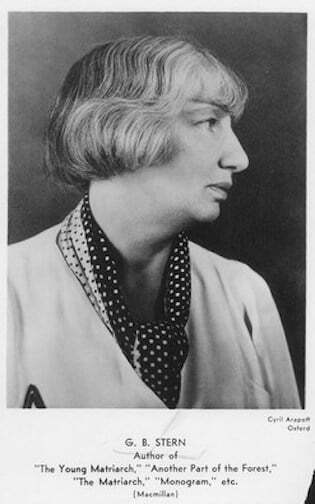
G.B. Stern in 1949
. . . . . . . . . .
Indomitable, cosmopolitan Anastasia, who presides over the family from her exotic home in West London is The Matriarch of the title, “at the age of sixty, in full blossom, at the very height of her mental and physical powers, brilliant, tireless, despotic, at the apex of the family triangle.” Anastasia has not always been the Matriarch, however:
“The Matriarch first began to assert itself in Anastasia, when she insisted that her eldest son and her eldest son’s wife – poor, pretty little Susie Lake, who had so longed for a home of her own – should, as a matter of course, well with her in the same house, sharing her table and controlled by her wishes.”
For Susie, coming from an English suburb, “into the very Rakonitz stronghold itself, into the house of the Matriarch, life was a tragedy and the bewilderment.” Instead of her own house, Suzie now has only her own room, which does not at all seem like her own.
“Heavily furnished by more exotic and profuse taste than her own, on the top floor of a house resembling some foreign palace within, with its antiques used as though they were commonplace; heirlooms thickly clustered about with anecdotes less conventionally romantic than broadly ludicrous; treasures brought from distant cities, not via the medium of shops, but by real people – real relations; dark, heavy furniture, and chandeliers that were a thousand dropping crystals that swayed and reflected light; portraits of ancestors . . . No wonder Suzie marveled how such a fantastic caravanserai could still manage, from the outside, to look almost like every house in Granville Terrace.”
Both metaphorically and physically, the incoming Jewish family have integrated, like Amy Levy’s, into formal, wealthy West London twentieth-century society but internally, behind, as it were closed doors, they are still Middle European, nineteenth-century Jewish. Anastasia’s daughter and youngest child, Sophie is as frightened of the Matriarch as her daughter-in-law Susie; always having given precedence to her older brothers, she feels ignored.
All she can do to assert her place in the family is to try to have a son. “If she did not bear a son who was also Anastasia’s first grandchild, she determined to kill herself.” Worse, she has married the wrong kind of man. “Not only a stranger, and a Gentile, but, from the point of view of Rakonitz, such a ludicrous stranger!”
Not only is he an Englishman, “and what was known as a profligate, without any sense of family,” he is “an artist by temperament, although not overmuch by virtue of work and creation; but carrying all the suspicious attributes of an artist as they were in the late nineteenth century.”
In the 1936, five volume-in-one re-issue of The Matriarch Chronicles, we are less than fifty pages into a book of nearly one thousand pages at this point; a Jewish family saga indeed. Stern dedicated it to John Goldsworthy, in admiration of his The Forsyte Saga; Caspary was a big admirer of the fictional Forsytes; when she first lived in London with Hope Skillman in the 1920s they visited Fleur Forsyte’s house in Belgravia – always the most expensive and exclusive part of London – and when she went back to live there again in the 1950s, far more financially secure now, she had was proud to tell Hope that she had a house round the corner from Fleur.
. . . . . . . . . .
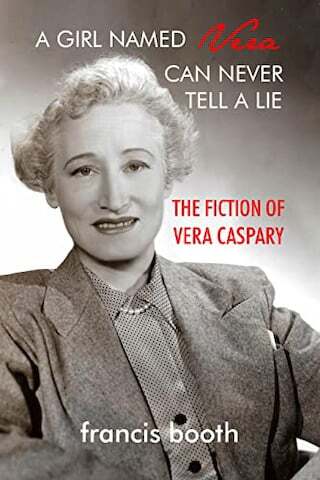
A Girl Named Vera Can Never Tell a Lie on Amazon (US)*
and *
. . . . . . . . . .
Contributed by Francis Booth,* the author of several books on twentieth-century culture:
Amongst Those Left: The British Experimental Novel 1940-1960 (published by Dalkey Archive); Everybody I Can Think of Ever: Meetings That Made the Avant-Garde; Girls in Bloom: Coming of Age in the Mid-Twentieth Century Woman’s Novel; Text Acts: Twentieth Century Literary Eroticism; and Comrades in Art: Revolutionary Art in America 1926-1938.
Francis has also published several novels: The Code 17 series, set in the Swinging London of the 1960s and featuring aristocratic spy Lady Laura Summers; Young adult fantasy series The Watchers; and Young adult fantasy novel Mirror Mirror. Francis lives on the South Coast of England.
. . . . . . . . . .
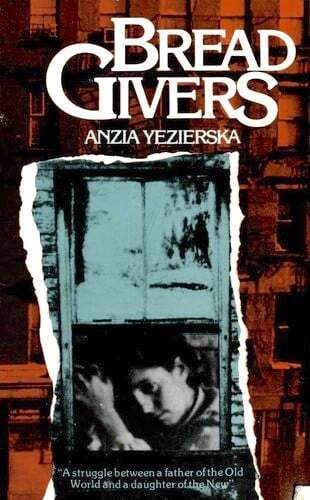
You may also like:
Jewish Women in Novels by Early Jewish Female Writers
. . . . . . . . .
*These are Amazon Affiliate links. If a product is purchased by linking through, Literary Ladies Guide receives a modest commission, which helps maintain our site and helps it to continue growing!
The post The Matriarch by G.B. Stern (1924) appeared first on Literary Ladies Guide.
April 17, 2022
Jane Austen’s Childhood and Glimpses of Her as a Young Woman
Jane Austen by Sarah Fanny Malden (1889) offers an excellent 19th-century view of Jane Austen’s works, along with a handful of chapters on the life of this beloved British author. This excerpt, featuring one such chapter, offers glimpses of Jane Austen’s childhood and what she engaged with as a young woman.
Born in Steventon, Hampshire (England), Jane (1775 – 1817) was part of a convivial middle-class family consisting of five brothers and her sister Cassandra, with whom she was very close. Her father was an esteemed rector. Jane spent the first twenty-five years of her life in Steventon, after which the family moved to Bath.
Mrs. Malden said of her sources, “The writer wishes to express her obligations to Lord Brabourne and Mr. C. Austen Leigh for their kind permission to make use of the Memoir and Letters of their gifted relative, which have been her principal authorities for this work.”
The 1889 publication of Malden’s Jane Austen was part of an Eminent Women series published by W.H. Allen & Co., London. The following excerpt is in the public domain:
The society at Steventon
The society immediately around Steventon when Jane Austen was growing up was neither above nor below the average of country society seventy miles from London.
It was not unusual for a country clergyman to find himself the only educated gentleman within a radius of some miles round his parsonage. But the dense ignorance of country gentlemen a hundred years ago is a thing of the past, and it could scarcely happen to any clergyman now to be asked, as Mr. Austen was once by a wealthy squire, “You know all about these things. Do tell us. Is Paris in France, or France in Paris? for my wife has been disputing with me about it.”
The Austens were not, however, dependent entirely on neighbors of this class for their social life, and whether, like Mrs. Bennet, they dined with four-and-twenty families or not, they certainly managed to have a good deal of pleasant society.
By birth and position the Austens were entitled to mix with the best society of their county, and though not rich, their means were sufficient to enable them to associate with the best families in the neighborhood.
Country visits were more of a business then than now; wet weather and bad roads and dark nights made more obstacles to social intercourse than we realize in these days; but a houseful of merry, cultivated young people, presided over by genial parents, is sure to be popular with its neighbors, and Jane Austen had no lack of society when she was growing up.
She was one of a most attractive family party, for they were all warmly attached to each other, full of the small jokes and bright sayings that enliven family life, and blessed with plenty of brains and cultivation, besides the sweet sunny temper that makes everyday life so easy.
. . . . . . . . .
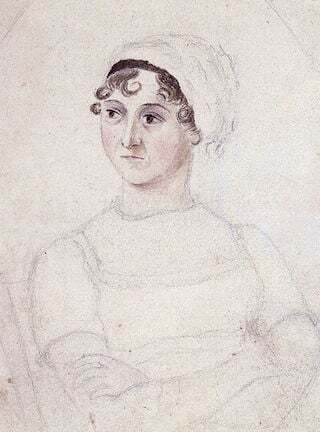
A drawing of Jane by her sister Cassandra
. . . . . . . . . .
Steventon Rectory in Jane Austen’s girlhood was as cheerful and happy a home as any girl need have desired, and she remembered it affectionately throughout her life, unconscious how much of its sunshine she herself had produced, for in her eyes its brightness was mainly owing to her sister, Cassandra.
It was natural that two sisters coming together at the end of a line of brothers should draw much together, and from her earliest childhood Jane’s devotion to her elder sister was almost passionate in its intensity.
As a little child she pined so miserably when Cassandra began going to school without her, that she was sent also, though too young for school life; but, as Mrs. Austen observed at the time, “If Cassandra were going to have her head cut off, Jane would insist on sharing her fate;” and this childish devotion only increased with riper years.
From beginning to end Jane never wrote a story that was not related first to Cassandra and discussed with her; she literally shared every thought and feeling with her sister, and the two pleasant volumes of letters which Lord Brabourne has published show us how the intense attachment between the two sisters never waned throughout their lives.
All her warmth of heart and devotion to her family shine out in them, as well as her quick perception of character; and they sparkle throughout with quiet fun, and with humor, which is never ill-natured, while from first to last there is not a line written for effect, nor an atom of egotism or self-consciousness.
It is characteristic both of Jane’s self-abnegation and of her complete faith in her sister that, even after she was a successful authoress, she always gave Cassandra’s opinion first to anyone consulting her on literary matters, and if it differed from her own, she mentioned the fact almost apologetically, and merely as if she felt bound to do so.
If she did not actually pine for her sister’s presence after she was grown up, she certainly missed her, even in a short time, far more than most sisters, however affectionate, would do.
At twenty she is eager to give up a ball to which she had been looking forward, merely that Cassandra may return from a visit two days earlier than she otherwise could, and writes, “I shall be extremely impatient to hear from you again, that I may know when you are to return.”
At another time she reproaches her for staying away longer than she need have done, and entreats her to write oftener while away, declaring, “I am sure nobody can desire your letters as much as I do,” while every letter she receives from Cassandra is commented on with the same lover-like ardor, and received with the same delight, long after both the sisters had passed the romantic stage of girlhood.
“Excellent sweetness of you to send me such a nice long letter,” writes Jane, in 1813, when she was eight and thirty years old; and though doubtless letters were greater treasures then than now, it must be remembered that these and similar expressions are from a woman who was usually anything but “gushing” or “sentimental” in her language.
Wherever the sisters were they always shared their bedroom, and if Jane’s feeling was the clinging devotion of a younger to an elder sister, Cassandra certainly returned it with an intense sympathy and affection that never diminished in life or in death.
The sisters were educated together chiefly at home. Mr. Austen taught his sons in great part himself, and was well fitted to do so, but the higher education for women had not then been discovered, and the Austen girls were not better instructed than other young ladies of their day.
. . . . . . . . .
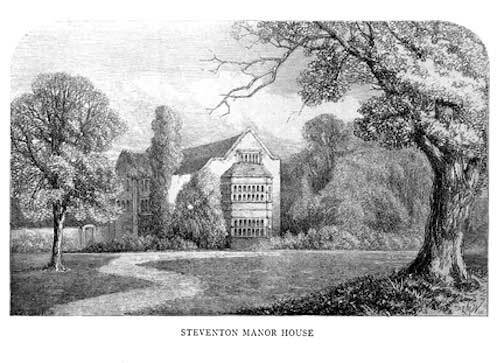 . . . . . . . . . .
. . . . . . . . . .
Jane’s special gift was skill and dexterity with her fingers; she was a first-rate needlewoman and delighted in needlework; she excelled also in any game or occupation that required neat-fingeredness; but she was no artist, and not a great musician, though far from a bad one.
Like Elizabeth Bennet, “her performance was pleasing, though by no means capital.” She was an excellent French scholar, and a fair Italian one; German was in her day quite an exceptional acquirement for ladies; and as to what was then thought of the dead languages for them, all readers of Hannah More must remember her bashful heroine who put the cream into the teapot and the sugar into the milk-jug on it being discovered that she read Latin with her father!
. . . . . . . . .
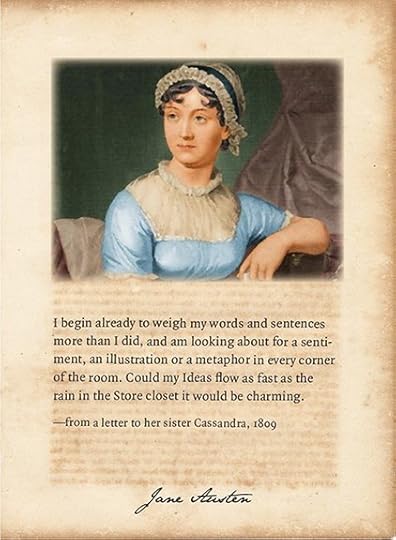
You may also enjoy: Jane Austen’s Literary Ambitions
. . . . . . . . . . .
Jane Austen risked no such overwhelming discovery, but she was well acquainted with the standard writers of her time and had a fair knowledge of miscellaneous literature. Crabbe, Cowper, Johnson, and Scott were her favorite poets, though, rather oddly, she set Crabbe highest; and it was a standing joke in the family that she would have been delighted to become Mrs. Crabbe if she had ever been personally acquainted with the poet.
Old novels were her delight, and the influence of Richardson and Fanny Burney may be traced in some of her early writings. I have always thought that her criticism on the Spectator in Northanger Abbey proves that she could have known very little of Steele and Addison’s masterpieces; but tastes differ, and she may have been unlucky in her selections.
She always took pleasure in calling herself “ignorant and uninformed,” and in declaring that she hated solid reading; but her letters continually make mention of new books which she is reading, and there was a constant stream of literature setting through the rectory at Steventon, in which Jane shared quite as fully as any of the others.
An early and avid writer
The delight and pursuit of her life, however, from very early days, was writing, and she seems to have been permitted to indulge in this pleasure with very little restraint; all the more, perhaps, that no amount of scribbling ever succeeded in spoiling her excellent handwriting.
After she grew up to womanhood she regretted not having read more and written less before she was sixteen and urged one of her nieces not to follow her example in that respect; but there must have been many wet or solitary days in the quiet rectory life which would have been very dull for the child without such a resource, and posterity may rejoice that no one hindered Jane Austen’s inclination for writing.
How soon she began to produce finished stories is not certain, but from a very early age her writings were a continual amusement and interest to the home circle, where they were criticized and admired with no idea as to what they might lead.
Most young authors try their hands at dramatic writing some time or other, and Jane passed through this stage of composition when she was about twelve years old, though she never seems to have attempted it later in life.
Private family theatricals
It was not a style which could have suited her, but at the time she tried it the young Austens had taken a craze for private theatricals, and Jane’s plays are thus easily accounted for. [According to James Edward Austen Leigh, a nephew who later wrote a memoir of his famed aunt, Jane was between thirteen and sixteen at the time of this family pursuit.]
The corps dramatique consisted of the brothers and sisters and a cousin, who had become one of them under pathetically romantic circumstances. She was a niece of Mr. Austen’s, had been educated in Paris, and married to a French nobleman, the Count de la Feuillade. He was guillotined in the Revolution, and she, with great difficulty, made her way to England, where she found a home in the already well-filled rectory at Steventon.
She was clever and accomplished, rather un-English in her ways and tastes, and very ready to help in the theatricals, which, perhaps, would not have existed but for her. There was no theatre but the dining-room or a barn, and both actors and audience must have been limited in number; but plays were got up in which Mme. de Feuillade was the principal actress.
James Austen wrote brilliant prologues and epilogues when they were wanted, and Jane Austen looked on and laid in materials for the immortal theatricals of the Bertram family.
Space must have made it impossible for a Mr. Yates, a Mr. Rushworth, or the Crawfords to be among the Steventon actors; but there may have been a very sufficient spice of lovemaking throughout the business, for Mme. de Feuillade afterwards married Henry Austen, Jane’s third brother. It is probable that there were enough “passages” between them during the theatricals to interest a girl of Jane’s age keenly.
Meanwhile, something—perhaps the absurdly transparent mysteries in which some old comedies abound—suggested to her a little jeu d’esprit, which, slight as it is, shows her keen sense of fun and her close observation, for she has copied the style and manner of an old play very closely, even in the dedication.
The post Jane Austen’s Childhood and Glimpses of Her as a Young Woman appeared first on Literary Ladies Guide.
April 15, 2022
A 19th-Century Analysis & Plot Summary of Pride and Prejudice by Jane Austen
Jane Austen by Sarah Fanny Malden (1889) offers an excellent 19th-century view of Jane Austen’s works. The following analysis and plot summary of Pride and Prejudice (1813) focuses on this beloved novel, which was Jane Austen‘s second to be published. It followed Sense and Sensibility, published two years earlier.
Mrs. Malden said of her sources, “The writer wishes to express her obligations to Lord Brabourne and Mr. C. Austen Leigh for their kind permission to make use of the Memoir and Letters of their gifted relative, which have been her principal authorities for this work.”
The 1889 publication of Malden’s Jane Austen was part of an Eminent Women series published by W.H. Allen & Co., London. The following excerpt is in the public domain:
Pride and Prejudice appeared in 1813 under its new and certainly better title (it had at first been called First Impressions), and Jane’s letters at the time are full of the unaffected interest which she always displayed in her own writings, mixed with her usual keen criticism. Jane’s opinion of her heroine, and of the first edition of the book is described in a letter to her sister Cassandra:
“I must confess, that I think her (Elizabeth) as delightful a creature as ever appeared in print, and how I shall be able to tolerate those who do not like her at least, I do not know. There are a few typical errors, and a ‘said he’ or a ‘said she’ would sometimes make the dialogue more immediately clear; but ‘I do not write for such dull elves’ as have not a great deal of ingenuity themselves.”
. . . . . . . . . .
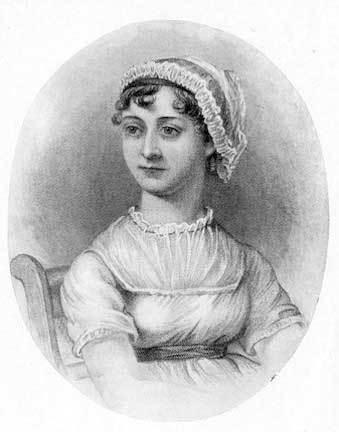
Learn more about Jane Austen
. . . . . . . . . .
No admirer of Elizabeth Bennet will wonder that her delineator could not find a satisfactory portrait of her, for she is a vary rare type of character; indeed, it is a distinguishing characteristic of Pride and Prejudice that both the hero and heroine are uncommon in every respect, and yet thoroughly lifelike.
A shade more of gaiety would have made Elizabeth a flippant, amusing, commonplace girl, just as a degree less intellect would have made Darcy as intolerable as Mrs. Bennet thought him. But Jane Austen had shaken off all tendency to exaggeration by the time she brought out Pride and Prejudice, and henceforth her characters are kept well within bounds.
We see in Darcy the man who has had everything to spoil him yet is really superior of being spoilt. He is handsome, wealthy, well-born, and of powerful intellect, and the adulation and submission he has always had from everyone about him wearies him into receiving such homage with cold indifference and apparent haughtiness, yet under this repellent exterior is a warm, generous, and tender heart, which is capable of great sacrifices for anyone he really loves.
Elizabeth Bennet is exactly the right wife for him, for, with a nature as capable of tenderness and constancy as his, she has all the simplicity, brightness, and playfulness which are wanting in him; yet from the day that she and Mr. Darcy first meet they take a mutual aversion to each other, and long after he has succumbed, and fallen in love with her, she is unconscious of his feelings, and continues to dislike him.
Elizabeth Bennet and her family
Elizabeth lives in Hertfordshire with a clever satirical father (whose pet she is), an intensely vulgar silly mother, and four sisters, of whom only one is her equal and companion: Jane and Elizabeth Bennet are as Cassadra and Jane Austen were to one another.
The Bennets, though well off, are not rich, and the daughters will be very poor, as their father’s estate is entailed to male heirs, and, at his death, goes to a distant cousin. This arrangement is a perpetual grievance to Mrs. Bennet, who cannot be made to understand the nature of an entail, and makes thereupon the remark which is so much truer than appears at first sights that “there is no knowing how estates will go when once they come to be entailed!”
Bad first impressions
The Bingleys, consisting of Mr. Bingley, a married and an unmarried sister, and the former’s husband, come to reside on an estate near the Bennets, and Mr. Darcy comes with them; he is Mr. Bingley’s great friend, and Miss Bingley has formed the intention of becoming his wife.
The Bingleys and Bennets meet at a ball, where Bingley falls in love at first sight with Jane Bennet, while Darcy is much bored by the whole thing, and, being urged to dance with Elizabeth Bennet, answers hastily and coldly that “she is not handsome enough to tempt me, and I am in no humour to give consequence to young ladies who are slighted by other men.”
Elizabeth overhears him, and registers a vow of eternal dislike to him. From this time, though neither the gentleman nor the lady have any wish to meet again, circumstances, which neither of them can control, force them into an intimacy.
. . . . . . . . .
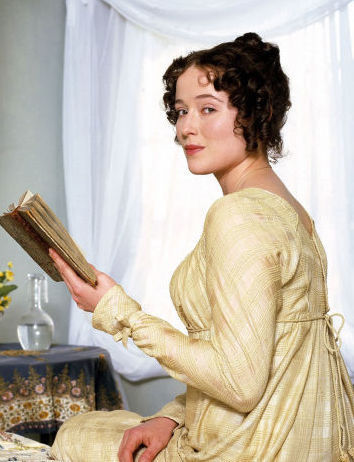
Film and Mini-Series Adaptations of Pride and Prejudice
. . . . . . . . . .
In due course, Darcy, who has begun by despising Elizabeth as a mere country-town belle, and believes himself perfectly safe from her attacks, falls hopelessly in love with her, although she has no idea of it.
When at last he is impelled to throw himself at her feet, she rejects him indignantly, not only, it should be said, on account of the original insult, but also because she believes him to have acted treacherously and basely in some occurrences of his past life.
She has, however, been deceived, in the stories she has heard, which her original dislike to him made her accept too readily, and Darcy, feeling bound to clear himself, writes her an explanation which opens her eyes to see that she has cruelly misjudged and needlessly insulted him.
Upon a generous nature like Elizabeth’s this knowledge can have but one result—she is gradually drawn over, first to admire, then to esteem him, and so reaches the brink of love, though he has no suspicion of her change of feeling and is determined never again to try his fate.
Circumstances, which seem likely to separate him and Elizabeth forever, prove to be the chain which draws them together at last.
Lydia’s disreputable elopement
Lydia, the youngest of the five Bennet sisters, a foolish, spoilt, flirting girl, makes a disreputable elopement with a young officer, named Wickham, of whom Elizabeth had seen a good deal.
He is the son of a former steward of Mr. Darcy, handsome, plausible, and unprincipled, and, having been thwarted by his employer in a disgraceful attempt to take Holy Orders, had revenged himself first by attempting an elopement with Miss Darcy, a girl of fifteen, to whom her brother is guardian, and afterwards by spreading abroad scandalous stories of Darcy, all absolutely false, although concocted with skill.
Elizabeth, at the time when her feelings against Mr. Darcy were most hostile, had heard and believed these stories, and it is to these she made an allusion when rejecting him. To clear himself he is obliged to tell her of his sister’s narrow escape, which, he entreats, she will tell no one but her sister Jane, and she obeys the injunction.
Now, in the first agony at Lydia’s shameful elopement, she reproaches herself bitterly for not having warned her own family against Wickham.
. . . . . . . . . .
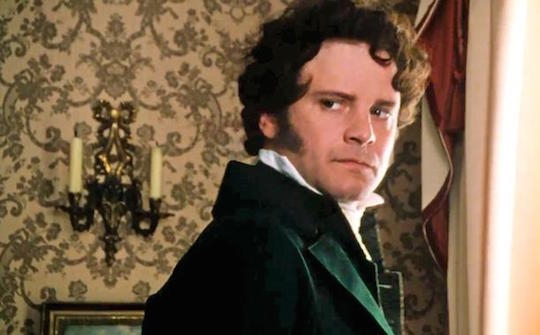
Why Has Mr. Darcy Been Attractive to Generations of Women?
. . . . . . . . . . .
Darcy, generously taking the blame upon himself, sets off in pursuit of the fugitives, whom he traces, and reinstates in comparative comfort and decency, after spending much time, trouble, and money in the undertaking, and (having done all this without the knowledge of the Bennet family) only requires that none of them shall ever be made acquainted with all that they owe him.
Of course, the secret leaks out, and Elizabeth is overwhelmed by the magnanimity of the man she has disliked and insulted, so that when be again ventures to plead his cause she grants it. She is all the more willing to do so as Jane is on the eve of a happy marriage with Bingley, and one of her bitterest prejudices against Darcy had been engendered by his opposition to their engagement.
Everything is now rose-color, but, unfortunately, Elizabeth had been at first so very outspoken against Mr. Darcy, and afterwards (partly from necessity) so very reticent about his rise in her good opinion that none of her relations, except an uncle and aunt, who have lately seen them together, can believe in her changed feelings, and even her own beloved sister is hard to convince.
Elizabeth, by repeated assurances that Mr. Darcy was really the object of her choice, by explaining the gradual change which her estimation of him had undergone, relating her absolute certainty that his affection was not the work of a day, but had stood the test of many months’ suspense, and enumerating with energy all his good qualities, she did conquer her father’s incredulity, and reconcile him to the match.
. . . . . . . . . . .
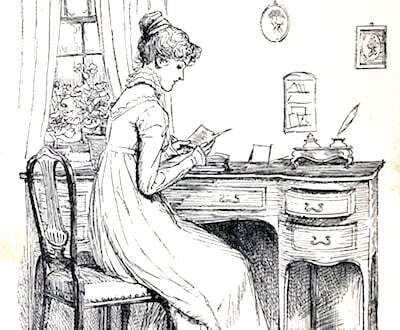
Memorable Quotes from Pride and Prejudice
. . . . . . . . . .
In following the career of the hero and heroine, the secondary characters of Pride and Prejudice have been somewhat passed over, but there is not one that could be suppressed without injury to the book, and each and all are excellent in their way.
Take, for instance, Mr. Collins, the prim, self-satisfied, under-bred young clergyman. He is cousin to Mr. Bennet, and (to Mrs. Bennet’s never-ending wrath) heir to the Longbourn estate.
Mr. Collins, being in search of a wife, hopes to find one among his cousins, and, for that purpose, invites himself to stay with them. He is kindly received, and after dinner the conversation turns upon his good fortune in having been presented to his living by Lady Catherine de Bourgh.
We feel, after a certain dialogue, that we know something of Lady Catherine as well as of Mr. Collins, and our acquaintance with both is allowed to increase. Mr. Collins fixes his intentions on Elizabeth, who, of course, refuses him; but she has an intimate friend, Charlotte Lucas, whose ideas about marriage are by no means as lofty as her own, and who is quite willing to accept a comfortable house and good income with Mr. Collins attached.
She becomes Mrs. Collins, and Elizabeth, though shocked and grieved at the marriage, cannot refuse her friend’s earnest entreaty to pay her a visit in her new home.
Darcy tries again
During this visit she unexpectedly meets Mr. Darcy, who is Lady Catherine’s nephew, and receives the offer from him, which she refuses with such indignant surprise.
She has traveled with Sir William and Maria Lucas—Charlotte’s father and sister—and two days after their arrival the whole party are invited to dine with Lady Catherine, Darcy and his friend not having then arrived.
There could not be a better picture of a second-rate great lady’s behavior towards people whom she considers as her inferiors, and it may be supposed from this how angry she is when her cherished nephew, whom she also intended should be her son-in-law, falls in love with Elizabeth.
She hears of it from outside sources, at about the time of Jane’s engagement to Bingley, and at once sets off for Longbourn to load Elizabeth with reproaches, and insist upon her giving up all idea of marrying Darcy.
Of course, Elizabeth absolutely refuses to do this, and her ladyship departs in great wrath; but as she has wrung from Elizabeth an admission that she is not actually engaged to Darcy, she calls on him in the hopes that he may be deterred from proposing again.
Her anger has, however, just the contrary effect; her account of what she calls Elizabeth’s “perverseness and assurance” fills him with hope, and urges him on to the final proposal, in which he is successful.
“It taught me to hope,” said he, “as I had scarcely ever allowed myself to hope before. I knew enough of your disposition to be certain that had you been absolutely, irrevocably decided against me, you would have acknowledged it to Lady Catherine, frankly and openly.”
As Elizabeth observes, “Lady Catherine has been of infinite use, which ought to make her happy, for she loves to be of use,” and though her ladyship’s fury knows no bounds when she hears that Darcy is actually married to Elizabeth, she condescends in time to make overtures to them, which they care too little about her to refuse.
Elizabeth Bennet charms throughout
Elizabeth Bennet’s charm is one that pervades the book, and is not easily condensed into any isolated passage; but her first connected conversation with Mr. Darcy after their engagement is fairly characteristic of both of them.
Elizabeth’s spirits soon rising to playfulness again, she wanted Mr. Darcy to account for his having ever fallen in love with her.
“How could you begin?” said she. “I can comprehend your going on charmingly when you had once made a beginning; but what could set you off in the first place?
“I cannot fix on the hour, or the spot, or the look, or the words, which laid the foundation. It is too long ago. I was in the middle before I knew that I had begun.”
“My beauty you had early withstood, and as for my manners—my behaviour to you was at least always bordering on the uncivil, and I never spoke to you without rather wishing to give you pain than not. Now, be sincere; did you admire me for my impertinence?”
“For the liveliness of your mind, I did.”
Darcy is quite as well-drawn a character as Elizabeth, for though his pride and self-will are, in the early part of the story, almost overpowering, we always see the really fine nature behind them, and we can feel that when he meets with a woman who will respect him, but never stoop to flatter his faults, and whom he can love enough to bear with her laughing at him, he will be a most devoted and excellent husband.
. . . . . . . . .
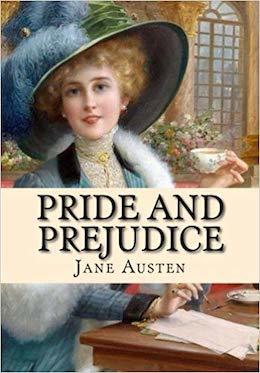
Pride and Prejudice on Bookshop.org* and Amazon*
. . . . . . . . . .
If the book can be said to have any defects, they are—first, that it is impossible to see how such a woman as Mrs. Bennet could have two daughters like Jane and Elizabeth; secondly, at Lydia’s elopement is a disagreeable incident, told too much in detail, and made needlessly prominent.
It is intended to bring Wickham’s baseness into greater relief, and to show how Darcy’s love could even triumph over such a connection; but it is revolting to depict a girl of sixteen so utterly lost to all sense of decency as Lydia is, and the plot would have worked out quite well without it.
Still, at the time Jane Austen wrote, she might have pointed to many episodes in great writers that were far more strangely chosen, and Lydia’s story does not really occupy much of the book, thought, for a time, it is prominent.
The other flaw is, I venture to think, the mistake of a young writer, and Mrs. Bennet is so excellently drawn, and is so amusing, that we cannot wish her refined into anything different.
It may be said, also, that Lady Catherine is too vulgar for a woman who was really of high birth; but it must be remembered that she is introduced among people whom she considers her inferiors, and vulgarity in high life is not so rare but that even Jane Austen, in her quiet country home, may have come across it.
There is not a character nor a conversation in Pride and Prejudice that could be omitted without loss, and we may, therefore, very well give over criticizing small defects, and yield ourselves to the full enjoyment of its genius as a whole.
. . . . . . . . . .
*These are Bookshop Affiliate and Amazon Affiliate links. If a product is purchased by linking through, Literary Ladies Guide receives a modest commission, which helps maintain our site and helps it to continue growing!
The post A 19th-Century Analysis & Plot Summary of Pride and Prejudice by Jane Austen appeared first on Literary Ladies Guide.
April 10, 2022
Writing for Madame: The Complex Friendship of Violette Leduc and Simone de Beauvoir
Simone de Beauvoir first met the French author Violette Leduc in 1945. At the time, de Beauvoir and her partner, Jean-Paul Sartre were the golden couple of Parisian intellectual circles, while Violette Leduc was a struggling writer mired in poverty.
Their first meeting, in the heady atmosphere of the Café Flore on the Left Bank, came only after Leduc had observed de Beauvoir and Sartre from a distance for several months, gathering the courage to introduce herself.
The resulting friendship seemed unlikely. Yet it lasted for several years, with mutual respect and admiration that survived Leduc’s unrequited attraction to de Beauvoir as well as the differing circumstances of the two women and their wildly diverging experiences of success.
Even today, Simone de Beauvoir remains a feminist icon while Leduc herself is marginalized, little known to either French or English readers, and their rich, complex friendship is often reduced to that of mentor and protege.
. . . . . . . . .
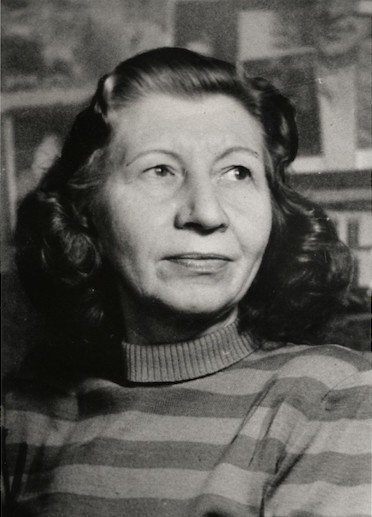
. . . . . . . . .
An unlikely friendshipTheir backgrounds could not have been more different. Leduc spent her childhood in poverty, as the unwanted daughter of an affair between a servant and the son of a wealthy family. Her education was piecemeal. She was expelled from her boarding school for having an affair with her female music teacher, Denise Hertgès, and she ultimately failed her baccalaureate exam.
Along with Denise (who she lived with until their relationship ended in 1935), she moved to Paris and began working as a secretary for a publishing company. In 1939, she married an old friend, Jacques Mercier, but the marriage only lasted a year and resulted in an abortion that almost killed her. Poor and alone, nursing an unrequited obsession for her friend Maurice Sachs, she attempted to make a living during the war by selling on the black market.
In contrast, de Beauvoir was raised in a bourgeois Parisian family and grew up in the prestigious 6th arrondissement not far from where she would eventually meet Leduc. Despite the family’s fortunes that had suffered during World War I, she attended a prestigious convent boarding school and passed her baccalaureate exams in both math and philosophy in 1925.
She then studied philosophy at the Sorbonne before achieving second place in the agrégation in philosophy, a competitive national postgraduate exam (Jean-Paul Sartre came first). She taught at lycée (high school) level until 1943 when she started making a living from her writing.
Despite their circumstances, the two women found common ground through writing. De Beauvoir later said that her first impression of Leduc was of a “tall, elegant blonde woman with a face both brutally ugly and radiantly alive.” But her attention was truly drawn to the manuscript Leduc handed her, titled “Confessions of a Woman of the World.”
De Beauvoir was skeptical. But instead of the “socialite’s confessions” she had been expecting, it was an extraordinary memoir of childhood that enthralled her so much that she read the first half of it without stopping. Determined that it should be published, she arranged for excerpts to appear in Les Temps Modernes, the journal that she had launched with Sartre, and was instrumental in its eventual acceptance by Gallimard in 1946. It was published as L’Asphyxie (later translated as In the Prison of Her Skin and again as Asphyxia).
It was the start of what would become a complex relationship, in which de Beauvoir became not only Leduc’s lifelong mentor and champion of her work, but also her muse and the subject of her unrequited attraction.
The starving woman
From then on, the two met every other week to discuss Leduc’s work. When de Beauvoir was abroad, she would send letters, but whether in person or in writing, she would always ask Leduc the same question: “Have you been working?” Already realizing that Leduc was prone to fits of paralyzing insecurity and feelings of unworthiness, de Beauvoir was determined to keep her new protege writing.
De Beauvoir’s support also extended to the financial: quickly understanding that Leduc’s poverty was a major obstacle to creativity, she arranged a small monthly stipend, claiming that it was paid by Gallimard.
Leduc became infatuated with de Beauvoir and channeled her obsession into a new novel, L’affamée (later translated as The Starving Woman). The novel’s primary theme is hunger and Leduc’s preoccupation with what the narrator calls “the identical mirages of presence and absence.” It begins with the narrator’s encounter, in a café, with a person she calls Madame and goes on to recount the narrator’s fluctuating state of mind as the relationship with Madame evolves.
Alternately close to and distant from Madame, thrown into despair or ecstasy by one meeting after another, the narrator eventually comes to a tentative acceptance of the reality and limitations of the relationship.
The novel also incorporates De Beauvoir’s insistence that Leduc should write: the narrator, conscious of her own perceived shortcomings, seeks out anything that would make her worthy in the eyes of Madame. “Let her order me to remove my shoes, let her order me to run on rocks, on nails, on pieces of broken glass, on thorns.” But what Madame demands instead is the “purgation” of creativity, and in particular of writing.
De Beauvoir described the novel to her American lover Nelson Algren as “a diary in which she tells everything about her love for me. It is a wonderful book.” However, she rejected Leduc’s advances, writing in 1945:
“Despite my colossal indifference, I was very moved by your letter and your journal. You tell me about my loyalty, I admire yours. I believe thanks to our mutual esteem and trust, we will achieve a balance in our relations. It is strange to find out that you are so precious to someone: you know that you are never precious to yourself; there is a mirage effect which will certainly dissipate quickly. In any case, this feeling cannot bother me more than flatter me … I would like you not to be afraid of me anymore, that you get rid of all this fearful side which seems to me so unjustified. I respect you too much for this kind of mistrust, of apprehension, to have any reason to exist.”
Leduc wrote of her devastation, saying, “She has explained that the feeling I have for her is a mirage. I don’t agree.”
. . . . . . . . . .
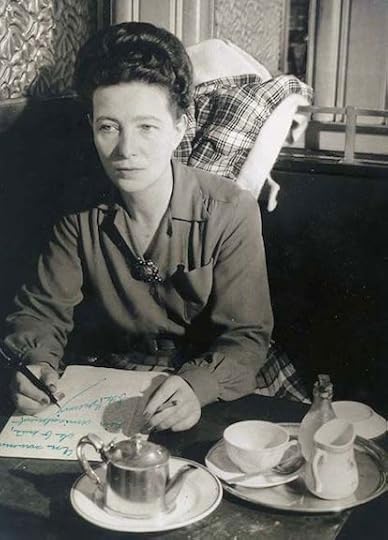
Learn more about Simone de Beauvoir
. . . . . . . . . .
Far from ending their friendship, however, Leduc’s infatuation only seemed to make it stronger, and De Beauvoir continued to act as a guide and mentor. The two continued to meet every other week, and whenever de Beauvoir was abroad, she sent encouraging and supportive letters to Leduc. From the Sahara, in 1950, she wrote:
“I am wholeheartedly with you in the struggle which you are leading to courageously to write, to live; I admire your energy, I would like this sincere deep esteem to help you a little.”
When Leduc’s novel Ravages had its entire first section censored as obscene for its depiction of a lesbian affair between two schoolgirls, de Beauvoir was “indignant at their prudery, their lack of courage. Sartre too. Do not be broken. You must defend yourself and we will help you…”
The censored novel was eventually published in 1955, while part of the offending section was later published as a stand-alone novella, Thérèse and Isabelle. It was a commercial success, and a film adaptation was released in 1968. But even this was not published in its entirety in France until 2000, and it didn’t appear in English translation until 2012.
Paranoia, depression, and psychiatric treatment
Despite De Beauvoir’s support, Leduc still struggled to achieve the recognition that she wanted and felt she deserved. Her first two books had been well received by other authors such as Jean Cocteau, Jean-Paul Sartre, and Jean Genet, who said of Leduc, “She is an extraordinary woman … crazy, ugly, cheap, and poor, but she has a lot of talent.”
The critics, though, were not impressed, and Leduc was mostly ignored by the reading public. Despondent and frustrated, she once said, “I don’t think of myself as not understood. I think of myself as nonexistent.”
By 1956, Leduc was suicidal and paranoid. Depressed by poor book sales and plagued by migraines and insomnia, she became convinced that journalists and critics were ridiculing both her creative failures and what she perceived as her ugliness. In desperation, she asked de Beauvoir to help her arrange an “investigation” into this press harassment.
Alarmed, de Beauvoir persuaded her to go to a psychiatric clinic at Versailles. She remained there for six months, her bills paid by de Beauvoir, undergoing electroconvulsive therapy and a “sleep cure.”
Belated success
Over the next few years, Leduc published two more books, neither of which met with much success. Her health remained fragile, and she began to lose faith in writing. It was de Beauvoir, committed to her belief in Leduc’s talent, who encouraged her to write her life story. The result was La Bâtarde, published in 1964 with a glowing preface by de Beauvoir:
“A woman is descending into the most secret part of herself, and telling us about all she finds there with an unflinching sincerity, as though there were no one listening.”
With this book, Leduc finally achieved some of the success she had craved for so long: it sold 170,000 copies in just a few months and was nominated for both the Prix Goncourt and the Prix Femina.
“The most interesting woman I know”
It wasn’t entirely a one-sided relationship. De Beauvoir considered Leduc “the most interesting woman I know” and was intellectually inspired by the woman who seemed to encapsulate and embody so many of her philosophical theories. She cited Leduc frequently in The Second Sex and drew on Leduc’s life for the book’s analysis of lesbianism.
In Leduc, she saw a vindication of her own philosophy — that we are all free to choose, no matter our past or previous circumstances. To her, Leduc had overcome the limitations of her childhood by choosing to write, thus freeing herself from the constraints of what life had laid down for her. Leduc, incidentally, challenged this theory, saying that “To write is to liberate oneself. Untrue. To write is to change nothing.”
The friendship between the two women lasted until Leduc’s death in 1972 from breast cancer, but it always defied any kind of neat classification. Despite their closeness, de Beauvoir stated in the 1980s that, “I established a certain distance from the very beginning,” while Leduc admitted in her memoirs:
“I shall never understand the meaning of the word love when it applies to her and to me. I do not love her as a mother, I do not love her as a sister, I do not love her as a friend, I do not love her as an enemy, I do not love her as someone absent, I do not love her as someone always close to me. I have never had, nor will I ever have, one second of intimacy with her. If I could no longer see her every other week, darkness would submerge me. She is my reason for living, without having ever made room for me in her life.”
. . . . . . . . .
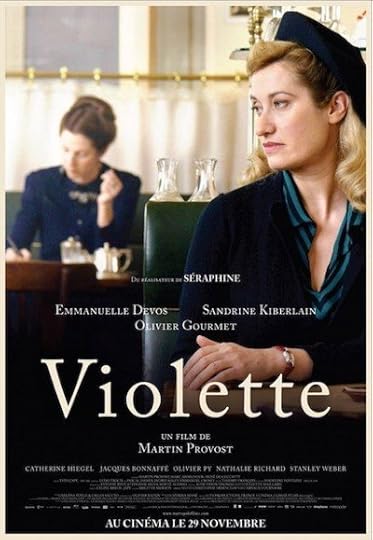
Violette
(2013 film) is available to stream on Amazon*
. . . . . . . . .
The complexity and ambiguity surrounding their relationship have proven to be a source of continued fascination: the 2013 film Violette, starring Emmanuelle Devos and directed by Martin Provost, concentrated largely on Leduc and de Beauvoir, and was well received.
And in 2020, when de Beauvoir’s letters to Leduc were sold, auction house Sotheby’s described them as “remarkable … charting a complex and ambiguous relationship…where unrequited amorous passion, tenderness, and mutual admiration tinged with mistrust mingle.”
Perhaps, though, it is best summed up by one of Leduc’s last interviews, given in 1970, in which she poignantly acknowledged, “at the end of my life I will think of my mother, I will think of Simone de Beauvoir, and I will think of my long struggle.”
. . . . . . . . .
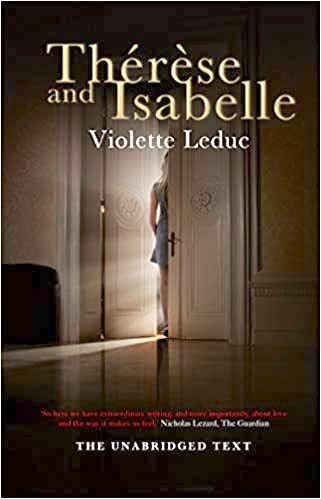
Violette Leduc page on Amazon*
. . . . . . . . .
. . . . . . . . .
Contributed by Elodie Barnes. Elodie is an author, poet, and artist with a serious case of wanderlust. She is originally from the UK, but has spent time abroad in Europe, the United States, and the Bahamas.
When not traveling or working on her current projects — a chapbook of poetry, “The Cabinet of Lost Things,” and a novel based on the life of modernist writer and illustrator Djuna Barnes — she can be found with her nose in a book, daydreaming her way back to 1920s Paris. Visit her on the web at Elodie Rose Barnes.
. . . . . . . . . .
*These are Amazon Affiliate links. If a product is purchased by linking through, Literary Ladies Guide receives a modest commission, which helps maintain our site and helps it to continue growing!
The post Writing for Madame: The Complex Friendship of Violette Leduc and Simone de Beauvoir appeared first on Literary Ladies Guide.
April 8, 2022
Evvie by Vera Caspary (1960)
Evvie (1960) is a sophisticated thriller by the remarkably prolific and unfairly forgotten novelist and screenwriter Vera Caspary. This appreciation and analysis of Evvie is excerpted from A Girl Named Vera Can Never Tell a Lie: The Fiction of Vera Caspary by Francis Booth ©2022. Reprinted by permission.
The publisher’s copy described the novel succinctly:
“This big, bursting novel of the roaring Twenties – and of two girls who believed that love and art could save the world, if not themselves – is in our view the best book that Vera Caspary has ever written, not forgetting Laura.
Evvie Ashton and Louise Goodman shared a studio in Chicago in 1928, the age of “the girl.” Louise was a successful advertising copywriter in love with her boss. Evvie, married and divorced at seventeen, beautiful, artistic, was living on her “alimony”. Men found her irresistible – just as she found men. She painted, she danced, she read a great deal, and could discuss anything by repeating what her admirers had said.
But, in the midst of all the gaiety, Evvie and Louise found their lives becoming desperately complicated. Yet neither sensed that tragedy was to strike, until a horrible crime involving friends and families, strays and unknowns, the cream and the dregs of Chicago, gave the newspapers a field day.
The reader, mesmerized by the constantly mounting suspense, follows the involvements, the revelations and the shocking relationships of all those touched by the crime. But it is Evvie herself who will haunt the reader’s memory for a long, long time.”
Reviews of this novel were overwhelmingly positive, highlighting the author’s talent at weaving suspense into a compelling narrative of the lives of two freedom-loving young women in the Roaring Twenties. Here’s a snippet of one such typical review:
“That same Vera Caspary who wrote the exciting Laura some years ago has a new murder-suspense story, Evvie, which in addition to skillful suspense provides a detailed account of two free and easy successful business gals in the Chicago of the Twenties. Evvie is so attractive and the evocation of her period so nostalgic that the reader is tempted to forget what a good mystery the author makes of who killed Evvie.” (Rocky Mountain Evening Telegram, September 18, 1960)
Focused on “faint praise”
Yet despite numerous glowing reviews, Caspary chose to focus on the “faint praise,” as she puts it, in this passage from her memoir, The Secrets of Grown-Ups (1979):
“The novel Evvie, which I still think one of my best, was greeted with faint praise. In Chicago, Fanny Butcher came out of retirement to declare it obscene—ironic judgment from today’s point of view, since there are no graphic descriptions, and the most explicit allusions are in a scene in which two naked girls discuss sex.
Since Laura I’ve been typecast as a suspense writer and, to my own dismay, may have fallen into the trap. Evvie was born of a situation involving murder. But instead of keeping to the mystery formula I indulged in elements far out of that field of fiction. There was only one murder. It came late, halfway through the story.
Evvie is a picture of the lives of girls in the twenties, drawn quite honestly from my own experiences. More clearly than in any of my other books it defines the changing position of women at a time when tradition was sturdier, inhibition more binding than in these later years when girls declare independence by demanding entrance to men’s colleges, sports, and bars. Evvie was begun in London, continued in New York, finished in Beverly Hills, proofed in Paris.”
. . . . . . . . .

Learn more about Vera Caspary
. . . . . . . . .
Caspary’s characterization of Fanny Butcher’s review is rather unfair; perhaps she misremembered it: the review is not exactly glowing but Butcher had been reviewing books for nearly 40 years at this time and can perhaps be forgiven for her cynicism regarding books written to be popular.
Butcher was hardly anti-Caspary: her review of The White Girl thirty years earlier had been very positive. And, despite Butcher’s reservations, her review does make one want to read the novel ,though apparently it did not make enough people want to read it to make Evvie a bestseller. Butcher doesn’t call the novel obscene at all and she had not in fact retired at this time. The review in question, from the Chicago Tribune, August 7, 1960, titled “Setting: Chicago 1920; Flavor: Beatnik 1960” concludes:
“Nobody is going to be deterred from reading Evvie for technical reasons, however, nor, in these days of the policy of the open door to every bedroom, by the heroine’s inability to deny herself a man, any man, even her best friend’s beloved. And Louise’s way of telling the story has a kind of entrancing glitter. So Evvie will probably be on the bestseller lists and be bought for the movies before the author gets her first royalty check.”
One of Caspary’s best novels
With hindsight, Caspary was right about Evvie: it is one of her best novels, possibly the best of them all and deserves to be as well-known as Laura and Bedelia. But, despite Butcher’s predictions, it never was on the bestseller lists, never was bought for the movies and is almost forgotten today.
It is a particular shame that it was never made into a film; the fact that the murder occurs and the heroine disappears halfway through would have been no barrier: Hitchcock did exactly that in Psycho, also released in 1960. And the year after Evvie, 1961, Caspary’s next novel, Bachelor in Paradise, was made into a film.
Perhaps by that time, after the death of film noir, producers were looking for more frothy material – Caspary could certainly do frothy; she did so with Out of the Blue in 1947, again with Bachelor, and in her light, romantic screenplays and original treatments for the movies. But not with Evvie. Evvie was serious for her — serious and personal, perhaps even cathartic in its intensely personal autobiographical elements.
A complex and autobiographical novel
Evvie is a complex novel and in my categorization of Caspary’s works into psycho-thrillers and coming of age novels it could have counted as either: its first sentence is “Horror attended the death of girlhood.”
The narrator, Louise, despite her high-earning job and the respect she gets from men in the office, is reluctant to leave girlhood behind and come of age. “With the responsibilities of my job, the help I gave my mother, with life insurance and the right to vote for a president in November, I was adult, old enough to give up girlhood. But how? I loved being a girl, I did not want to change. Maturity looked too stolid.”
Along with the earlier Thelma, Evvie is unique among Caspary’s works in that it has a first-person narration where the narrator is not the title character, like Daphne du Maurier’s Rebecca. This trope is also reminiscent of Wilkie Collins’ The Moonstone – we have already seen how heavily influenced Caspary was by Collins’ other novels – where Rachel Verinder is the central character but never the narrator; like Collins’ Rachel and like her namesake in du Maurier’s My Cousin Rachel, Evvie is only seen through the eyes of other people.
Evvie is also unusual in being by far by far the most autobiographical of Caspary’s works, apart from her actual autobiography – the narrator is called Louise, Caspary’s middle name, in case we had any doubts. Louise is not so much a Caspary woman as a lightly fictionalized version of Caspary herself.
In fact, we might almost say that the title of the novel is a red herring: it really should have been called Louise; Evvie herself is almost as absent a presence as Rebecca in du Maurier’s eponymous novel.
. . . . . . . . . .

A Girl Named Vera Can Never Tell a Lie on Amazon (US)*
and *
. . . . . . . . . .
Although Evvie was published in 1960, when Caspary was sixty-one years old, the setting is a lovingly described late 1920s Chicago, as it was in the much earlier The White Girl and Music in the Street and would be again much later in The Dreamers. At this time and place Caspary was working in a man’s world as a copywriter and designing and selling correspondence courses while writing a novel in her spare time, as is Louise.
But, like Caspary herself, Louise Goodman is regarded as one of the boys (a good man). “They put on a show of gallantry and when they used off-color expressions smiled toward me furtively. Someone would always remark that you could say anything in front of Louise, she was a hell of a good sport.”
At work, because they are not obsessed with Louise’s looks, not scared of her, men feel able to give Louise backhanded compliments: “I’ve never known a girl like you. You’re not pretty but you got a wonderful line and you’re dynamite.” Evvie, who has no job and lives off the alimony her stepfather gets, is a painter – the two girls live in her studio apartment – and the pretty one of the pair; next to her Louise is the plain but smart one.
All the sections of Evvie that describe Louise’s job sound like the reminiscences of Caspary herself, as told in her tales of those 1920s days in her autobiography The Secrets of Grown-ups. Louise’s mother even sounds very much like Caspary’s in her attitude to her daughter’s business career and independence:
“For the life of her Mama could not see how anyone could pay eighty dollars a week to a girl of twenty-two. Yet she was proud. These shreds of information nourished her and my success at the office gave her the chance to brag when ladies at bridge tables wondered why a girl clever enough to earn all that money had not yet found a husband.”
Like Vera Caspary with her Marinoff dance course and Van Vliet photoplay course, Louise Goodman writes correspondence courses for the agency, inventing gurus for whose advice subscribers will pay good money, like the famous Dr. Russell Wadsworth Bryant. But “there was no Dr. Russell Wadsworth Bryant. The names of three New England poets had been strung together to give the sound of culture to E. G. Hamper’s correspondence course. . . My greatest success in the agency had been in the development of the Bryant personality.”
The emergence of the working girl
It is not just in Louise’s job but in her relationship with Carl, one of her bosses in the office, that she is so similar to Caspary, who in her autobiography describes in detail the physically intimate relationship with her own boss, whom she calls simply the Junior Partner.
Louise begins to fall for Carl just as he begins to withdraw; she doesn’t understand the change in his attitude to her until later.
“Each day at the office I waited for some sign of change in Carl’s attitude, some word of praise, some little attention. . . I was tempted to ask if and why he had quit liking me but had no courage to face him with the question. I pitied myself, so a spinster future and the dry life of devotion to my mother.”
Like Caspary herself in the late 1920s, Louise uses every spare minute of her leisure time to write novels and stories. When the Chicago winter is so bad she can’t get to work, Louise only has one thing on her mind: “Wearing two sweaters, a robe and blankets I tried to work on my novel. It was impossible to travel through the snow-piled streets to the office.” This reads like Caspary fondly reminiscing. Even Louise’s description of her literary ethos could be a summary of Caspary’s own positioning of women within her fiction:
“All my tales, whether gaily caparisoned with wealth or morbid in poverty, whether celebrating health or pain (for there are sanatoria and cemeteries as well as ballrooms), tell of man’s reliance upon woman, his need, blindness, and final recognition. In its many beginnings, mutations and styles of narration, my story always concerns man’s search for the sympathy and satisfaction that only the heroine can bestow.”
Both the time around and just after Evvie’s publication in 1960 and the time of its setting in the 1920s were in their different ways the era of the working girl: independent, sexually aware and enjoying her freedom – though the working girls of the 1960s enjoyed sexual freedom far more than those of the 1920s.
The first wave of novels about these freedom-loving, happily unmarried working women started appearing in the 1920s. A second wave started appearing at the end of the 1950s with Rona Jaffe’s The Best of Everything in 1958, followed by Evvie in 1960 and then Mary McCarthy’s The Group and Sylvia Plath’s The Bell Jar, both published in 1963. A passage from Evvie:
“For this was the age of The Girl. We had come out of the back parlor, out of the kitchen and nursery, we turned our backs upon the blackboards, shed aprons and paper cuffs. A war had freed us and given women a new kind of self-respect. The adjective poor no longer preceded the once disreputable working girl. It was honorable, it was jolly, it was even superior to be a career girl. Intellectual young men considered themselves members of a lost generation. For us it was a decade of self-discovery. We held jobs, we voted, we asserted equal independence with men, equal privilege. Best and most decisive in the reshaping of our lives was the money in our pocketbooks.”
The female contraceptive pill was launched in the United States in 1960, and although it wasn’t widely available for a long time, that didn’t stop women claiming sexual equality with men or refusing to wait until after marriage to have sex. It certainly doesn’t stop Evvie and Louise, who have 1960s rather than 1920s sex lives.
Even Evvie’s wealthy and flighty mother does not disapprove. “If you’re not married or engaged, the least you can do is have a bit of fun. But I insist that you use proper contraceptives. Do you know about pessaries? … We could go to London and have you fitted.”
In The Group, Dick tells Dottie to get herself “a pessary;” she doesn’t understand. “‘A female contraceptive, a plug,’ Dick threw out impatiently. ‘You get it from a lady doctor.’” Dick is married – to someone else – and makes Dottie promise not to fall in love with him; no one in “the group” wants naïvely to confuse sex and love. Neither does Louise in Evvie.
“To this day I am grateful that I had my first experience with an honest lover. There were no romantic promises, no vows of permanent devotion, no discussions of marriage. Our generation took lovers with conviction and did not rush off to seek absolution. Nor was I a girl who considered a husband destiny and a wedding the end of all seeking.”
Nevertheless, much later, when the first lover tells Louise he is getting married, she has pangs of regret. “In the mirror I saw the pallid, tear-streaked face of a spinster with no more in life than a job and the memory of a youthful affair.”
Frank, cynical, and explicit
In its frankness, cynicism and explicitness about sex, Evvie feels as though it was written sometime in the middle 1960s, in the time of Betty Friedan and Helen Gurley Brown, in the age of the contraceptive pill, rather than at the end of the 1950s.
But according to Caspary’s autobiography, there was indeed a similar frankness about sex in the big city when she moved to New York in the 1920s, when she was in her twenties; Caspary seems herself at that time to have lived a life very similar to that of Louise and Evvie, according to The Secrets of Grown-Ups:
“Sex was the backbone of conversation among intellectuals and their imitators. In uptown apartments as well as Greenwich Village studios, among girls and girls, men and men, men and girls, with lovers, potential lovers and rejected lovers; conversation was the popular aphrodisiac.
We all had a smattering of kindergarten Freud and at the drop of a chemise would analyze our own and our friends’ affairs. Sexual inhibition was to be avoided like pregnancy and a repressed libido shunned like a dose of clap. No one used the term sexual revolution, but certainly a generation had risen in revolt against the Victorian restraints of its parents. Sex had become the dominating theme of novels, plays, sermons, lectures, jokes, and pranks.”
Evvie was married and divorced young, so she isn’t a virgin at the start of the story. But she doesn’t at first let her latest lover – the mystery lover with whom she is obsessed but whose name Louise and we, the reader do not yet know – know about her sexual appetites.
Later Evvie feels she has to confess to him about her urges and then she confess her confession to Louise, who is Evvie’s confidante in everything but the man’s name: “wayward and wanton,” is how she describes herself to him, stealing the words from Louise’s novel, though she denies being obsessed with sex.
“’I said I’d never liked it very much, that I really didn’t care an awful lot about sex. That’s true.’ Sighing again, she waved her cigarette aloft. ‘I never did go crazy about it the way some girls do. At boarding school in Santa Barbara there were girls, simply maniacs.’”
For contrast, Caspary gives the sexually aware Louise and Evvie a mutual friend, Midge, a relatively new recruit to the ranks of Chicago working girls who is shy and virginal, very much unlike them. Midge has a boyfriend who keeps insisting she has sex with him, but Midge is very unsure. “I’ve told him over and over, let’s be good friends, Bob, but don’t ask me to be a common pushover.”
Louise and Evvie try to explain that his attitude is perfectly normal in a young man. “Bob’s in love with you and he honestly believes that sexual completion is an expression of love.” Midge will not relent. They accuse her of cruelty to Bob.
After Evvie’s death, Midge, now a successful newspaper reporter, wastes no opportunities to hit out at the immorality of Evvie and her circle in her paper.
“Last winter Evvie and her sophisticated friends laughed at this country girl for expressing horror at their advanced views of life and sex but today these same ‘bright young people’ are asking themselves what all of their cocktails, jazz, modern philosophy and indiscriminate petting leads to.”
. . . . . . . . . .
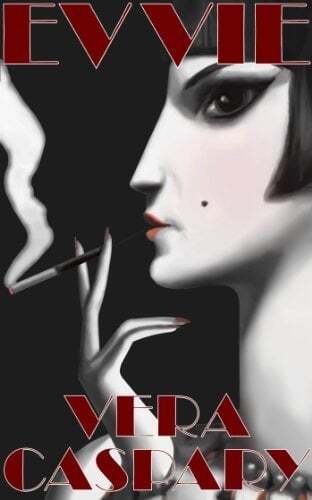
Physical copies of Evvie are very hard to come by;
here’s the Kindle version on Amazon*
. . . . . . . . . .
Up to this point, Evvie has been simply a more-than-semi-autobiographical story about two young women enjoying free life and free love in the 1920s. Suddenly, mid-chapter, it becomes a psycho-thriller. Both of the big revelations come at once, though Louise and the reader have already begun to suspect the first revelation: “Only the compulsion to self-deceit could have kept me from noting the signs along that tragic road.”
In the very next paragraph, the M word first appears for the first time as the pace and tone of the story change completely.
“To keep this story rigidly within the limits of my knowledge at that time would stunt its growth. Indirection and subterfuge weave a false mystery. What I shall now tell (out of chronological order) was later confessed in a darkened room. The terror of its mood is recalled whenever I see bars of unwelcome sunlight force their way through a closed Venetian blind or hear in any voice the echo of desperation. It was in the taut time after the murder when Carl sought my understanding. No other state of mind could have brought about such articulate agony.”
As Caspary later said in her autobiography, quoted above, she had begun writing Evvie as a mystery, but she had “indulged in elements far out of that field of fiction” – she had clearly got carried away with the thinly-veiled autobiography and ended up combining two kinds of narrative in one novel, which upset some critics and readers.
Still, that blending of mystery and psychology is the essence of the psycho-thriller and when we learn that Evvie has been murdered, we care far more about her than we did about Laura because we know so much more about her. At this stage, we have no idea how or why Evvie was killed; this is the opposite of Laura, where we know exactly how the murder was committed but very little about the murdered woman.
The rest of the novel alternates between psycho and thriller, though there is far more reflection than action, with revelations, flashbacks of details from Louise’s past and Evvie’s diary, which Louise finds in the studio and hides from the police – she had not read it before.
“Betrayal by a man is to be expected, woman’s lot, but she had been my friend, my darling, beloved since childhood. As I walked I scolded her. Resentment was barren for it is futile to rage at the dead; but I had to remind her. There was so much, thousands of secrets, confidences, foolish notions. She had been my first love. I had been caught in that period when a girl gives rapture and worship to her own sex.”
Louise – as Caspary’s mouthpiece – makes clear again that the story, like any narrative, must be unreliable and partial.
“Out of yellowing newspapers as vulgar and lively as this morning’s murder, out of Evvie’s diary and mine this story has been rewoven; out of nostalgia for girlhood, out of snatches of unforgotten conversations, daydreams disinterred, out of tunes and flavors that recall ghosts. I cannot promise that every scene is precisely remembered nor every dialogue true.”
Spoiler ahead
Carl is arrested for Evvie’s murder, though neither he nor Louise have told the police about his relationship with the dead Evvie. But it turns out that Carl didn’t do it, someone else did, someone unlikely, someone we have not even met before: the “pimply” boy who worked at the garage next to the studio and had run errands for Evvie; he had become obsessed with her.
But although this twist is unexpected and unlikely, not to mention disappointing, Caspary has planted plenty of examples of Evvie giving money to disabled beggars and the unfortunate who lined the streets of Chicago in the manner of Chekhov’s gun. Louise had always been frustrated at Evvie’s indulgent and, as Louise sees it, dangerous habit of talking and giving to waifs and strays, the disabled and the outsiders, of whom the young murderer is one.
This unexpected and unconventional ending is either, according to taste, brilliant or banal and bathetic.
“There was no mystery nor moral to the squalid tale; it had none of the inexorable directness of a contrived detective story, neither the glitter of crime in high places nor the spice of Bohemian transgression.”
As she had in Laura, Caspary comments, meta-fictionally, on the traditional detective story and connects the psycho with the thriller.
“The horror of the case lay in its untruths; all those bright red herrings hailed in the beginning as important clues and found in the end to be no more than reflections of our own guilt.”
. . . . . . . . . .
Contributed by Francis Booth,* the author of several books on twentieth-century culture:
Amongst Those Left: The British Experimental Novel 1940-1960 (published by Dalkey Archive); Everybody I Can Think of Ever: Meetings That Made the Avant-Garde; Girls in Bloom: Coming of Age in the Mid-Twentieth Century Woman’s Novel; Text Acts: Twentieth Century Literary Eroticism; and Comrades in Art: Revolutionary Art in America 1926-1938.
Francis has also published several novels: The Code 17 series, set in the Swinging London of the 1960s and featuring aristocratic spy Lady Laura Summers; Young adult fantasy series The Watchers; and Young adult fantasy novel Mirror Mirror. Francis lives on the South Coast of England. He is currently working on High Collars and Monocles: Interwar Novels by Female Couples.
. . . . . . . . . .
*These are Amazon Affiliate link. If a product is purchased by linking through, Literary Ladies Guide receives a modest commission, which helps maintain our site and helps it to continue growing!
The post Evvie by Vera Caspary (1960) appeared first on Literary Ladies Guide.
April 7, 2022
Sense and Sensibility by Jane Austen: A 19th-Century View
Jane Austen by Sarah Fanny Malden (1889) is an excellent resource as a 19th-century view of Jane Austen’s works. The publication was part of an Eminent Women series published by W.H. Allen & Co., London. The following analysis and plot summary of Sense and Sensibility (1811) focuses this work, which was Jane Austen‘s first published novel.
Mrs. Malden said of her sources, “The writer wishes to express her obligations to Lord Brabourne and Mr. C. Austen Leigh for their kind permission to make use of the Memoir and Letters of their gifted relative, which have been her principal authorities for this work.” This excerpt is in the public domain:
In the summer of 1811, two years after Jane Austen’s move to Chawton Cottage, Sense and Sensibility was published by Egerton. Jane, at the age of thirty-six, was fairly launched on that career of authorship which was to prove so short, yet so much more brilliant ultimately than her best friends and warmest admirers could have expected.
Her own expectations were so humble—probably from previous disappointments — that it has been said she saved something out of her income to meet any possible loss in the publication, a precaution which was uncalled for. She made one hundred and fifty pounds by it, and, on receiving the money, remarked that it was a great deal to earn for so little trouble!
Sense and Sensibility was originally called Elinor and Marianne, but it might as appropriately have been named The Dashwood Family, for it is really the history of one family, of whom two sisters are nominally the chief characters, but by no means the most interesting; and the other personages of the story, as was so usual with Jane Austen, only revolve round the central characters.
John Dashwood’s promise
From the first conversation early in the book between John Dashwood and his wife, we feel that we know them thoroughly, and can safely predict their future conduct all through. John is the only child of his father’s first marriage; he inherits a good fortune from his mother, and has acquired another with his wife, besides which his only child has had a large one unexpectedly left to him by a relation.
He has a stepmother and three half-sisters, Elinor, Marianne, and Margaret Dashwood, who, on the premature death of the father, are left very scantily provided for. On his deathbed, Mr. Dashwood earnestly entreats John Dashwood to do something for them, which the latter readily promises, especially since the fortune that has come to his child had always been destined for the second family.
The John Dashwoods take possession of the house and estate as soon as the funeral is over, and the elder Mrs. Dashwood perceives that she and her daughters must soon find themselves a home elsewhere. Meanwhile John Dashwood debates, first with himself, then with his wife, as to what he is bound to do for them.
“When he gave his promise to his father he meditated within himself to increase the fortunes of his sisters by the present of a thousand pounds apiece. He then really thought himself equal to it. The prospect of four thousand a year in addition to his present income, besides the remaining half of his own mother’s fortune, warmed his heart, and made him feel capable of generosity.
“Yes, he would give them three thousand pounds: it would be liberal and handsome! It would be enough to make them completely easy. Three thousand pounds! he could spare so considerable a sum with little inconvenience.”
A wife’s objections
John Dashwood thought of it all day long and for many days successively, and he did not repent. His wife did not at all approve of what her husband intended to do for his sisters. To take three thousand pounds from the fortune of their dear little boy would be impoverishing him to the most dreadful degree. She begged him to think again upon the subject.
How could he answer it to himself to rob his child, and his only child too, of so large a sum? It was very well known that no affection was ever known to exist between the children of any man by different marriages, and why was he to ruin himself and their poor little Harry by giving away all his money to his half-sisters?
“It was my father’s last request to me,” replied her husband, “that I should assist his widow and daughters.”
Perhaps Mrs. Dashwood’s bitterness against her husband’s family is sharpened by perceiving the very evident attachment of her eldest brother, Edward Ferrars, for Elinor Dashwood, an attachment which both she and her mother find insupportable. They are bent on his making a brilliant marriage which shall raise him to eminence.
The elder Mrs. Dashwood, on the other hand, is delighted at the prospect, for, while cordially disliking her daughter-in-law, she has a great esteem and affection for Edward Ferrars; and warm-hearted, romantic, and imprudent, she looks to nothing but the future happiness of the young people.
. . . . . . . . . .
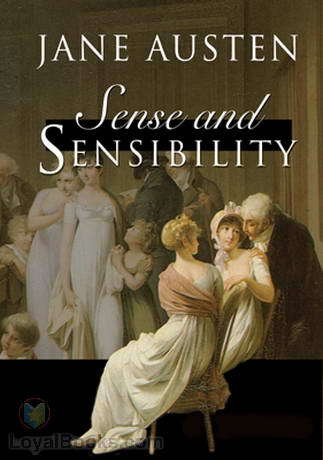
Quotes from Sense and Sensibility by Jane Austen
. . . . . . . . . .
The second daughter, Marianne, is the exact copy of her mother in disposition; both regard all prudence or circumspection as worldly wisdom of the worst type, and while they respect Elinor for her calm judgment and steady good sense, they have no wish whatever to imitate her.
I think the title of the book is misleading to modern ears. Sensibility in Jane Austen’s day meant warm, quick feeling, not exaggerated or over-keen, as it really does now; and the object of the book, in my belief, is not to contrast the sensibility of Marianne with the sense of Elinor, but to show how with equally warm tender feelings the one sister could control her sensibility by means of her sense when the other would not attempt it.
These qualities come still more prominently forward when Mrs. Dashwood and her daughters have found a home at Barton Cottage, on the estate of a cousin, Sir John Middleton. He is a good-humored sportsman, his wife a vapid fine lady, and his mother-in-law, Mrs. Jennings, a vulgar old woman. He is very fond of society, and the kind of society he gathers round him may be easily guessed.
Marianne, who is refined and cultivated, despises them all intensely, and is barely civil to the Middletons and their friends; Elinor, to whom their ways are equally distasteful, nevertheless recognizes the kindly intentions of their landlord, and responds to them as far as possible.
Colonel Brandon
There is one individual at Barton Park whom Marianne finds agreeable — Colonel Brandon, a friend of Sir John, who is a sensible, cultivated man of about five and thirty, and she is the more interested in him as he is from the first visibly falling in love with Marianne; but that young lady considers his age as an insuperable barrier to any ideas of marriage.
“Thirty-five has nothing to do with matrimony,” Marianne declares contemptuously.
“Perhaps,” said Elinor, “thirty-five and seventeen had better not have anything to do with matrimony together; but if there should by any chance happen to be a woman who is single at seven and twenty, I should not think Colonel Brandon’s being thirty-five any objection to his marrying her.”
“A woman of seven and twenty,” said Marianne after pausing a moment, “can never hope to feel or inspire affection again; and if her home be uncomfortable or her fortune small, I can suppose that she might bring herself to submit to the offices of a nurse for the sake of the provision and security of a wife. In his marrying such a woman, therefore, there would be nothing unsuitable. It would be a compact of convenience, and the world would be satisfied. In my eyes it would be no marriage at all, but that would be nothing. To me it would seem only a commercial exchange, in which each wished to be benefited at the expense of the other.”
John Willoughby
It is obvious that a young lady of seventeen with these views will make a great goose of herself someday, and the occasion is not far off. A new character appears at Barton Park, one John Willoughby, who is young, handsome, and well-born.
He is evidently much attracted by Marianne’s beauty and animation, and as she finds in him a congenial spirit, holding all her views, and agreeing with all her sentiments, she is soon as thoroughly in love with him as he appears to be with her.
Elinor cannot wonder at their attachment, but she does wish they would make it a little less conspicuous. “When he was present she had no eyes for anyone else. Everything he did was right. Everything he said was clever …”
This blissful condition of “spooning,” to which Elinor objects, and which Mrs. Dashwood thinks quite natural, comes to an end through Willoughby being called to London by a wealthy relation, whose orders he must obey.
He departs with every appearance of affliction but gives no pledge as to his return; and Marianne, though absolutely certain of his constancy, abandons herself to an ecstasy of grief and despair at his absence, which nothing can moderate.
Elinor has troubles of her own quite as severe as her sister’s. She has always felt that there was some unacknowledged obstacle between Edward Ferrars and herself, and has believed it to be the opposition of his mother, on whom he is entirely dependent, as he has never been allowed to have a profession.
Now, however, two Miss Steeles, cousins of Sir John Middleton, appear at Barton Park, and Elinor learns for the first time, quite unexpectedly, what it is that lies between Edward and herself. He is engaged to Lucy Steele, an engagement formed in a moment of boyish folly when he was only nineteen and living with her uncle, his tutor; but the young lady, who has a keen eye to her own interests, is quite determined not to release him, and he cannot in honor draw back.
Lucy has heard enough of Elinor to be jealous and suspicious; her engagement is a profound secret at present, but she confides it to Elinor under a pledge of secrecy, hoping thereby to make her thoroughly wretched. In this amiable intention she only half succeeds.
Elinor knows Edward too well to believe that he really cares for a girl of Lucy’s type; but she does feel that he is separated from her, probably forever, and, being obliged to keep this knowledge a secret from her mother and sisters. Being at the same time very anxious to betray nothing that should give Lucy any triumph over her, her position is a very bad one.
All this time nothing is heard of Willoughby, and Marianne becomes increasingly wretched. Mrs. Jennings is going to her London house for the winter, and as she is fond of young people, and has married both her own daughters, she urges the Miss Dashwoods to accompany her. Elinor at first refuses the invitation.
At any other time an invitation like this would have disgusted Marianne Dashwood beyond power of expression; now, in her eagerness to learn something about Willoughby, she is wild to go; and Elinor makes up her mind to endure the visit for her sake, well aware that poor Mrs. Jennings will get very little society out of her companion if Marianne go with her alone.
Love affairs come to a crisis
In London the plot thickens, and all the love affairs come to a crisis. Marianne, after sending Willoughby letter after letter, which remain unanswered, meets him at length, only to learn that he is on the eve of marriage to a young lady of large property.
As her grief and misery are past all restraint, Elinor now ascertains what she had sometimes feared, but thought impossible— that Willoughby had never definitely spoken of love to Marianne, and that the romantically imprudent girl, pursuing her theory of complete confidence in anyone she loved, had given the most outspoken marks of devotion to a man who had never told her he cared for her.
The truth must now be known to all their friends, who are by this time gathered in London, and Elinor’s chief anxiety is to keep all the comments from reaching her sister.
Lady Middleton expressed her sense of the affair about once every day, or twice, if the subject occurred very often, by saying, “It is very shocking indeed!” and, by means of this continual, though gentle vent, was able, not only to see the Miss Dashwoods from the first without the smallest emotion, but very soon to see them without recollecting a word of the matter.
Having thus supported the dignity of her own sex, and spoken her decided censure of what was wrong in the other, she thought herself at liberty to attend to the interest of her own assemblies, and therefore determined, though rather against the opinion of Sir John, as Mrs. Willoughby would at once be a woman of elegance and fortune, to leave her card with her as soon as she married.
A decidedly dull and almost unnecessary part of the book comes in here, where Colonel Brandon thinks himself bound to give Elinor, at full length, an episode in Willoughby’s past life, which, he hopes, may someday show Marianne more plainly how unworthy he was of her.
The story is disagreeable; it is difficult to believe that a man like Colonel Brandon would have told it in all its details to a girl of nineteen, and it is obvious that it would do Marianne no good to know it, as Elinor discovers when, with curious want of judgment, she forces it upon her; in short, it is a little piece of sententiousness which betrays the youth of the writer.
Poor Elinor’s own affairs are sufficiently agitating at this time. The Miss Steeles have come up to London, and Lucy Steele, who is becoming very anxious to secure Edward, worms herself with great address into the good graces of his mother and sister, till she and her sister are invited to stay with Mrs. John Dashwood in London.
Edward himself is in town and intensely wretched under Lucy’s jealous eyes, while Elinor, in addition to her own distress, is placed in perpetual difficulties by Marianne, who, of course, knows nothing of Edward’s unhappy position, and promotes tête-à-tête between him and Elinor so openly as to enrage Lucy almost beyond self-control.
At last, the storm bursts; the indiscretion of the elder Miss Steele reveals her sister’s engagement, and the fury of Mrs. Ferrars and Mrs. Dashwood knows no bounds. John Dashwood immediately calls upon his sisters to give them all particulars and some news of his wife.
Marianne has been greatly shocked and grieved at the discovery of Edward Ferrars’ engagement; still more distressed by finding how long Elinor has had to bear the sorrow of it alone, and though at first, following her favorite theories, she declares that Elinor could never have really cared for Edward, or she could not have borne his desertion so calmly, she is gradually brought to a more reasonable frame of mind by her sister’s earnest representations.
Marianne’s warm heart is completely overcome, and her praiseworthy efforts at self-government are the result.
. . . . . . . . . . .
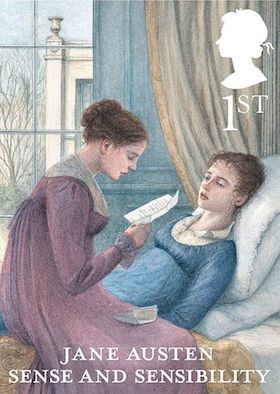
Jane Austen Postage Stamps
. . . . . . . . . . .
The sisters are anxious now to leave London but have to pay a visit on their way home to Mrs. Palmer, Mrs. Jennings’ other daughter; and the whole of this visit might, I venture to think, have been omitted with advantage to the story. Marianne is taken ill there; Elinor and Mrs. Jennings remain alone to nurse her, as everyone else is afraid of infection.
The illness increases so alarmingly that Mrs. Dashwood is sent for; and then Willoughby, who is already married, hears that Marianne is dying. In an agony of remorse at his conduct to her, and of misery at his own position, he makes his way to Elinor to palliate his conduct, and to implore Marianne’s forgiveness.
His wretchedness softens Elinor into granting him a hearing; but she had much better not have done so, nor should such a girl as she have allowed him to tell her all he did about his past life, and about the woman he has married, even though its object is to soothe Marianne by letting her know how sincerely he had loved her.
When Marianne recovers and returns to her own home with her sister, she is comforted by knowing that her love was not bestowed without return, and her high principle makes her resolve to occupy her mind so thoroughly as to drive out all remembrance of the past. Her energetic schemes for doing this, and improving herself, are told with all Jane Austen’s gentle satire.
In the same gently satirical tone, we are told how Mrs. Dashwood receives the information of Colonel Brandon’s attachment for Marianne, when — perhaps rather too soon —he ventures to tell her of it, and to entreat her to countenance and further it.
He is well aware that Marianne has never cared for him, but hopes with time and perseverance to succeed in his suit, and Mrs. Dashwood, who has never, until then, contemplated him as a lover for Marianne, relates to Elinor what has passed.
Colonel Brandon will succeed in time, but Elinor’s own affairs are not in so blissful a state. Edward Ferrars, remaining faithful to Lucy, and, having determined upon taking Holy Orders, has been presented by Colonel Brandon to a small living in his gift (a severe blow to Mrs. John Dashwood, whose husband begs that the matter may not be mentioned before her!) and his marriage now appears imminent.
But Lucy Steele has no taste for love in a cottage, and having an opportunity of making acquaintance with Robert Ferrars—the fortunate younger brother for whom Edward has been disinherited—she directs her energies to securing him.
As she is pretty and clever, the gentleman weak and a coxcomb, she soon succeeds; a clandestine marriage puts all possible interference out of the question. Ss Mrs. Ferrars is too proud and too obstinate to reinstate her elder son in his proper place, Robert enjoys a comfortable income with the wife on whose account Edward had been turned out of his mother’s house.
All is reconciled
Edward comes to Elinor for her forgiveness which, of course, he obtains and then, as she insists on his being again received by his mother before she will marry him, he reluctantly consents to call on his sister in London and ask her to make up matters between him and Mrs. Ferrars.
The reconciliation is brought about, and Edward and Elinor start upon their career of happiness together. Marianne gradually wakes up to the discovery that Colonel Brandon loves her, and the still more startling discovery that she can love him.
“Instead of falling a sacrifice to an irresistible passion as once she had fondly flattered herself with expecting, instead of remaining even for ever with her mother, and finding her only pleasures in retirement and study… she found herself at nineteen submitting to new attachments, entering on new duties, placed in a new home, a wife, the mistress of a family, and the patroness of a village.”
An imperfect novel presaging Jane’s more mature work
There can be little doubt that in Sense and Sensibility we have the first of Jane Austen’s revised and finished works. In several respects, it reveals an inexperienced author.
The action is too rapid, and there is a want of dexterity in getting the characters out of their difficulties. Mrs. Jennings is too vulgar, and in her, as in several of the minor characters, we see that Jane had not quite shaken off the turn for caricature, which in early youth she had possessed strongly.
The disagreeable story of Willoughby’s earlier life is unnecessary to the plot, Colonel Brandon is too shadowy to be interesting, and Margaret Dashwood, the third sister, is an absolute nonentity.
Nevertheless, there is much in it that is good. The John Dashwoods; Elinor, Marianne, and their mother; the Middletons, and Mrs. Palmer are all excellent, and, remembering it as the work of a girl of twenty-one, its promise for her future success was very great.
It can never be put aside by anyone as wholly unworthy of her powers; all that the most severe critic could say is that it is not quite up to the mark of her later, more matured writing, and this is, indeed, a faint condemnation which would be praise for almost any other author.
The post Sense and Sensibility by Jane Austen: A 19th-Century View appeared first on Literary Ladies Guide.
March 31, 2022
The Gardenia by Vera Caspary (1952)
Even by her usual standards, Vera Caspary’s novella The Gardenia had a very quick route to the screen. Published in early 1952, producer Alex Gottlieb bought the film rights on September 3, 1952, and engaged Fritz Lang to direct (Caspary had no input into the script).
This overview of The Gardenia, the basis for the renowned 1953 film The Blue Gardenia, is excerpted from A Girl Named Vera Can Never Tell a Lie: The Fiction of Vera Caspary by Francis Booth ©2022. Reprinted by permission.
By November 24, 1952, the final shooting script was ready, a distribution deal was struck with Warner Brothers on the 27th, Lang began shooting on the 28th, and finished on Christmas Eve.
The film was renamed The Blue Gardenia, probably to cash in on the notoriety of the 1947 “Black Dahlia” murder in Los Angeles and the 1946 noir film The Blue Dahlia, with a screenplay by Raymond Chandler – his first – where the title also refers to a night club.
The song The Blue Gardenia, specially written for the film, is performed at the Blue Gardenia restaurant and club by Nat King Cole while the two main characters are having dinner; it was rerecorded for general release by Cole in January 1953 with the Nelson Riddle Orchestra.
Not a “Caspary woman” — at first
Agnes Codd (called Norah in the film and played by Anne Baxter, who had co-starred with Gene Tierney in Laura) is no Caspary woman — at least not at first. She changes dramatically throughout the story.
On the surface, this is a murder mystery and fits best in the psycho-thrillers section. But deep down it’s also an existential coming-of-age story, a female bildungsroman just as much as Jane Eyre, Agnes Grey, Fanny Burney’s Evelina, Maria Edgeworth’s Belinda, or Elizabeth Gaskell’s Ruth.
If this comparison seems fanciful, remember that Sara in The Murder in the Stork Club has the professional name Haworth after the Brontë Parsonage and that Caspary was a big fan of Wilkie Collins.
Films and novels in the noir mode do not usually have psychological development in their characters, or indeed much psychology at all; The Blue Gardenia is generally considered one of the great films noir and perhaps this is part of the reason.
Unlike the typical Caspary woman, Agnes is not a highflying career success, but works with many other women in a telephone exchange as a long-distance operator, and the story is not set in fashionable, media-people Manhattan like its precursors Laura, Murder in the Stork Club and Stranger Than Truth.
And unlike her predecessors, Agnes does not have her own apartment but shares a bungalow with a roommate, divorcee Crystal. Shy, modest Agnes does not stand out among these many women, nor does she want to; her closest precursor is Mae in Music in the Street.
“Agnes was so tidy, so conventionally dressed, so conservatively made up, that she could pass in a crowd unnoticed. Many girls, less well-made, were more fetching because they had made a legend of their own glamour.”
All the other girls seem to have boyfriends, about whom they talk constantly, boasting shamelessly – as Agnes sees it – of their sexual awareness and experience.
“Most of them treated innocence, or ignorance, or chastity – it was the same thing whatever you called it – as a disability. It was innocence that made Agnes unimportant.”
Agnes’ colleagues are like Mae’s in relation to her and in return, she has Mae’s attitude to her fellow hostel dwellers. Agnes, brought up teetotal in a religious environment with an abiding sense of sin and shame, does not have anything to do with men, but because of this she feels isolated and alone; even her roommate has a boyfriend. The chatter in the ladies’ bathrooms at work sounds exactly like the lounge in Mae’s working girls’ hostel thirty years earlier.
She tried to saunter carelessly in to the Ladies’ Lounge. The room was crowded and filled with chatter. One theme prevailed: “my boyfriend” . . . “my husband” . . . “the man I dated last night” . . . “my steady” . . . “that heel” . . . “that egg” . . . “that jerk” . . . “my darling” . . . Because Agnes was so much out of it, she pretended not to care. Around her the girls preened, clattered, darkened eyelashes, flaunted breasts, swung their hips for the pleasure of watching themselves in mirrors.
Agnes “was an echo of prejudices, her mother’s and the sewing circle’s; her voice creaked like their porch rockers. Rebelling and fleeing her hometown had done Agnes no good. She was a product of her environment. The city had not remolded her in its gaudy image.”
. . . . . . . . . .

A Girl Named Vera Can Never Tell a Lie on Amazon (US)*
and *
. . . . . . . . . .
But still, Agnes attracts the attention of office lothario Henry Preble, who has quite a senior position at the firm; she agrees to go on a date with him while roommate Crystal is away with her boyfriend.
Henry is notorious in the office for telling girls he likes certain of their physical aspects. “‘I like you, Agnes. You’re a sweet girl and your legs,’ his lips trembled with the weight of praise, ‘your legs are like music.’” Although the other women think of him as a creep and pervert, Agnes thinks him not bad looking.
“A delicate man, who looked as though a feather would knock him over, he had the thin-skinned delicate face of a sensitive child. His eyes were large, light, and deeply set in bluish hollows and his mouth, as rosy and finely-textured as a baby’s, was always quivering and twisting.”
Agnes is well-aware of Henry’s reputation but has convinced herself she has nothing to worry about, as she tells Crystal. “Any girl can take care of herself. No girl ever had to let a man have his way with her . . . You know what my mother used to say? She always said a girl was safe so long as she had a hatpin.”
Crystal laughs at her for being so old-fashioned, and Tex, a female neighbor, calls Agnes “An angel. A lady. By me, that spells sucker.” But when Crystal and Tex go off with their boyfriends on Saturday, Agnes is wracked with loneliness.
“She watched Tex in her fringed jacket and wide-brimmed Western hat go off with Montie, and the sense of loneliness became so knotted in her insides, she closed all of her windows and pulled down the shades so that the sounds of life should not remind her that other people were not like her, listening to their radios and eating their dinner in solitude. . . Agnes had made a sandwich on whole wheat bread but it tasted of loneliness, as if it had been salted with tears.”
Agnes goes on the date with Henry. When he meets her, Agnes thinks everything is going to be okay.
“No one could have looked more respectable, more harmless than the delicate small man in the Saturday night uniform, dark blue suit, white shirt, plain tie. The conformity pleased her. She felt that she and Henry were correct, a well-dressed couple, part of the Saturday night world.”
. . . . . . . . .
 Learn more about Vera Caspary
Learn more about Vera Caspary
. . . . . . . . .
Henry takes her to a bar where he plies Agnes, who has never drunk alcohol before, with Gibson cocktails and afterward takes her to a Chinese restaurant, where they know him well. On the way in, a blind flower seller gives her a “mystery gardenia.” Agnes is thrilled, “no one had ever given her a flower before.”
In his controlling way, Henry decides to call her Charmian, saying he doesn’t like the name “Agnes.” Soon she is drunk – or possibly even drugged, it isn’t entirely clear. She can hardly stay awake. Henry takes her away in his car. Agnes is drifting off already.
Apart from the “I want to show you my drawings” trick, the “landlady chaperone” trick is the oldest in the book, and she doesn’t exist. There are lots of other clues in the apartment to Henry’s intentions, but Agnes is too drunk to notice them. In fact, she’s quite proud of herself and wonders what the other girls would think of her being pampered in such luxurious style by a man.
“Sweet enough to kiss,” says Henry as he brushes her cheek and gives her a drink in an erotically shaped glass.
“The handle of the glass was in the shape of a naked woman, leaning over to peer inside. On lacquered shelves, along with Harry’s books and souvenirs, were more of these glasses and a jug decorated with nymphs in provocative positions.”
Henry tells Agnes he likes to paint women and would like to paint her; she says she would not make a good model, as she is not good looking. “‘You’ve got a fine body. Thin but . . .’ He shrugged away her flaws with a movement of his wrist, ‘but those legs. I could kiss them.’”
Unwanted advances
Henry puts his arm around Agnes, she pushes him away. “Don’t. Please don’t.” He tries to kiss her, but Agnes is suddenly revolted, “and although her heart had begun to leap and skip, she was able to accumulate enough strength to push him off.” But everything has now become too much for Agnes.
“The music and the gardenia, the night and the weariness. Her heavy lids fell; but in darkness she still saw the red flickering of sinful light and the wicked yellow dartings of the candle flames.
When she woke up, it seemed that years had passed and a different person lay there. Her mother’s good daughter felt the pounding of evil in her head, knew the sour return of gin, the very taste of sin on her tongue. Of time and place she was not yet aware and her lethargy was such that she could not open her eyes and find out. Her back and legs knew, by the feel of the mattress, that this was not home.”
What occurred during the blank line in the text, a deliberate lacuna, we are not told and have to imagine for ourselves. But Agnes pulls herself round.
“Four cocktails could not defeat her mother’s daughter. Virtue was no disability; virtue was strength, and worthy of defense. Milk-and-water limbs turned to bone and muscle, gentle hands to iron. She was up, off the couch, holding him at arm’s length, shaking him like a dirty rug.”
But Henry is not done; he attacks her.
“He caught her, pinned her to the wall, his hands like cords that bound her wrists. To blind herself against the sight of twisted, juicy lips, flicking tongue, blood-bursting veins, she closed her eyes. He laughed then, seeing defeat on her eyelids. She turned her head so that when she opened her eyes his face should not sicken her. Now, lids lifted, eyeballs cut by the sudden fire, she saw the moving radiance caught in the poker which, with its sharp point and shining brass knob, stood erect among the andirons just as her mother’s best gold hatpin used to stand high and proud among humbler occupants of the pincushion.”
Agnes runs out of the apartment. The next thing we know, the next thing Agnes knows, is that Henry has been found dead, beaten to death with a poker, “a withered gardenia, broken off at the stem, left lying close to the studio couch,” as the radio announcer says.
. . . . . . . . . .
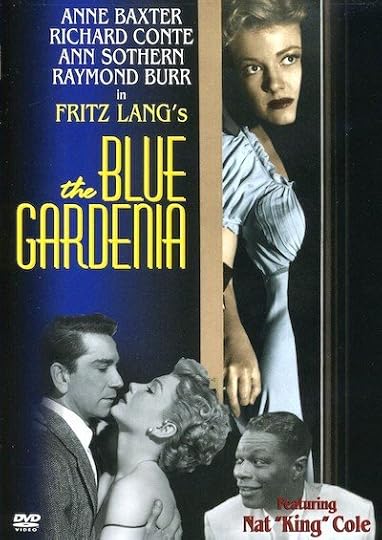
1953 film adaptation: The Blue Gardenia*
. . . . . . . . . .
“GARDENIA CLUE IN MURDER MYSTERY; FATAL LOVE DUEL IN STUDIO; LOVE TRYST KILLER SOUGHT” the newspaper headline screams. “GARDENIA KILLER SOUGHT! SEEK MYSTERY GIRL IN STUDIO SLAYING! yells another newspaper.
The police interview various of Agnes’ colleagues at the phone company; it turns out that Henry had taken several girls back to his apartment, given them new names and kept a list in his apartment of which parts of which women’s bodies he liked best, in his gender-reversed, Frankenstein-like attempt to create the perfect woman, if only in his mind.
Shy, mild Agnes is the last person anyone would suspect and her name is not listed. She doesn’t even suspect herself. The murderer wore gloves and there are no fingerprints; Agnes was not wearing gloves. She can’t have done it. Or could she?
Whatever she did, it has completely changed Agnes’ view of herself. A religious pamphleteer calls at the house, “repent and be saved,” she says. Agnes shouts at the woman but then wonders whether she should confess, thinking of her mother’s ideas of sin and redemption.
She gets dressed, goes to the police station to confess but changes her mind at the last minute. Instead, Agnes decides to change her appearance.
“On her way to the bathroom, she stopped at the mirror to greet the enchanting blonde … Agnes had never felt so alive. Alive! It was more than the newness of being blonde, deeper than the awareness of looking her best. It was a new depth in feeling.”
The experience of standing at the police station, about to confess a capital crime, has changed Agnes for good – good in the sense of forever as well as in the sense of good for Agnes; at least, that’s how she feels at this time, much more the Caspary woman now.
“She felt pretty, graceful, coquettish, no kin to the profane slut of the morning, nor to the mousy frump who had fled from her own reflection in the doors of the Locust Avenue police station.”
Norman, a newspaper reporter, turns up at the house looking for gossip and ends up flirting with Agnes and taking her out. She suspects that he might just be pursuing her to see if he can get a story out of her, but then she dismisses the thought. Norman’s attention feeds Agnes’ new personality.
“Her sense of female power was growing. Had there been anything other than admiration in his pursuit of her, he would not have allowed her to lead him to the boundaries of danger and follow so readily when she skipped away.”
But the personality change may not actually be for her good, she realizes, thinking back to her upbringing and her mother, to the pervasive idea of sin.
“To thine own self be true. Which self? Her mother’s good daughter or the slut whose whisky-tainted mouth had shouted obscenities at a dutiful Christian? No self could at the same time be both good and evil. The sourness returned to her mouth; she remembered the aftertaste of Gibson cocktails.”
Crystal begins suspect that Agnes is hiding something; Agnes had been very mysterious about the taffeta dress she wore on the date with Henry; the blind flower seller said she had heard the rustle of taffeta. But then a woman confesses to the crime, so that’s the end of that, all the pressure is off Agnes.
Except that it isn’t. It turns out that the woman who confessed is crazy and has done it before; the blind flower seller says the woman has the wrong voice and the waiter from the Chinese restaurant says she is not the woman who was with Henry that night. It can’t have been her.
Agnes goes to the police station, dressed in black taffeta, with white gloves and a gardenia. Norman still doesn’t believe it was her, why couldn’t it have been the other girl, he asks.
“Because I did it. I hit him with the poker. I killed him and . . .” Agnes looked at her right hand, immaculate in the white glove, but curved as when it had grasped a brass knob in which had been reflected the flames of an artificial fire. “And it was a sin,” she added. This settled it for her. The deepest urge of her nature had been satisfied. There were no more drumbeats in her head; distorted shadows had faded; she was not afraid. Confession had washed the sourness from her tongue.
Agnes will never again “pass in a crowd unnoticed.” She has completely transcended the humdrum world of her colleagues. She has also turned her mother’s moral system inside out; committing the greatest sin of all – murder – to avoid the lesser sin of unmarried sex.
And was what she did even a sin? Before any of Agnes’ circle knew she did it, there had been a discussion about whether the woman was right or wrong to stop her rapist – potential or actual – by any means necessary. One male character, Willard – whose views are perhaps more liberal than those of the average American male of the time, is very certain.
The public is sympathetic too; Agnes has become something of a heroine, at least in Caspary’s summing up:
“They looked and they saw. She was not a criminal; nor any more a sap. The small pale girl with her silk dress, her flower, and her dyed hair, would never again be innocent. She had fought the battle, trod the wavering path, known good and evil.”
. . . . . . . . . .
Contributed by Francis Booth,* the author of several books on twentieth-century culture:
Amongst Those Left: The British Experimental Novel 1940-1960 (published by Dalkey Archive); Everybody I Can Think of Ever: Meetings That Made the Avant-Garde; Girls in Bloom: Coming of Age in the Mid-Twentieth Century Woman’s Novel; Text Acts: Twentieth Century Literary Eroticism; and Comrades in Art: Revolutionary Art in America 1926-1938.
Francis has also published several novels: The Code 17 series, set in the Swinging London of the 1960s and featuring aristocratic spy Lady Laura Summers; Young adult fantasy series The Watchers; and Young adult fantasy novel Mirror Mirror. Francis lives on the South Coast of England.
. . . . . . . . . .
*This is an Amazon Affiliate link. If a product is purchased by linking through, Literary Ladies Guide receives a modest commission, which helps maintain our site and helps it to continue growing!
The post The Gardenia by Vera Caspary (1952) appeared first on Literary Ladies Guide.
March 28, 2022
Jane Austen’s Love Life: Conjectures, Theories, & Evidence
Jane Austen’s love life has long been the subject of conjecture. Her purported romance with Thomas Lefroy, a young Irishman, for example, was the subject of the 2003 book Becoming Jane Austen, which was adapted to the middling 2007 film, Becoming Jane.
Sincere attempts have been made to sort fact from fiction when it comes to Jane Austen’s romances, and this excerpt from Jane Austen by Sarah Fanny Malden (1889) is an excellent endeavor.
This book is focused more on Austen’s work than on her life, with the exception of a handful of chapters, this being one of them. The publication was part of an Eminent Women series published by W.H. Allen & Co., London.
Mrs. Malden said of her sources, “The writer wishes to express her obligations to Lord Brabourne and Mr. C. Austen Leigh for their kind permission to make use of the Memoir and Letters of their gifted relative, which have been her principal authorities for this work.” The following excerpt is in the public domain.
The Austen siblings grow up
The years from 1787 to 1795 which passed over Steventon Parsonage, brought few changes to the quiet life of its inmates, except such as occur in every family of young people growing up.
From boys and girls, the Austens became young men and young women: James, Edward, and Henry all made their start in life, and the two elder ones married; Francis and Charles went into the navy and rose rapidly, for those were golden days for steady, ambitious young naval officers.
Cassandra duly took her place as the “Miss Austen” of the family, and finally came Jane’s turn to be, as she says of a friend in one of her letters, “grown up and have a fine complexion, and wear great square muslin shawls.”
. . . . . . . . .
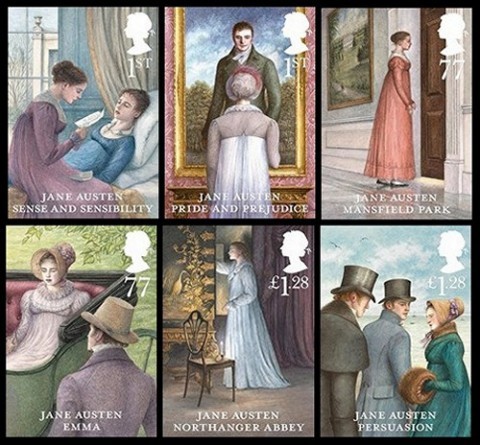
Jane Austen Postage Stamps
. . . . . . . . .
In other words, Jane Austen, in 1795, was “tall and twenty,” and if she had not, to continue the quotation, “beaux and balls in plenty,” it can only have been because the neighborhood was not rich in these advantages; she had, however, quite as much as she wanted of both.
Those who knew her at this time speak highly of her beauty, and two portraits which still exist of her quite bear out their praise. “Fair and handsome, slight and elegant,” Sir Egerton Brydges calls her at this time, and the first portrait, which shows her in early youth, depicts a tall, slight girl, whose graceful élancé figure is not wholly disfigured, even by the ugly, unbecoming dress of the day.
She stands with a fan in her hand, in the attitude of one just about to speak; the head, well set and poised, is thrown slightly back, the brilliant, beautiful eyes look laughingly out as if enjoying some gay speech, and the full lips are slightly parted, as if ready with a playful rejoinder. The hair is cut short, but waves in thick curls all over her head, and figure and expression alike give the idea of her being, like her own Emma Woodhouse, “the picture of health.”
The brilliant expression would be attractive in a plainer face, and, looking at the radiant girl, one is tempted to wonder how Jane Austen could have remained Jane Austen all her life, but in truth no one would have found it easy to persuade her into matrimony.
Her taste was fastidious, her home a very happy one, and her heart and mind abundantly occupied, so that the admiration she received amused more than it touched her, and she took good care that it should not usually go beyond very reasonable limits.
The saga of Thomas Lefroy
One admirer, who figures rather conspicuously in some of her earlier letters, subsequently achieved considerable eminence in life; this was Mr. Thomas Lefroy, afterwards Chief Justice of Ireland. He came into Hampshire one Christmas (when Jane was just twenty) on a visit to his aunt, Mrs. Lefroy, whose husband was the Rector of Asbe, the parish adjoining Steventon. This Mrs. Lefroy was a brilliant woman, with much charm of manner; she was greatly attached to Jane, who looked up to her with all a girl’s admiration for an older woman of superior attainments.
Jane was constantly at Ashe, and when she met Thomas Lefroy there the two clever young people were mutually attracted. Very possibly Mrs. Lefroy hoped that the attraction might ripen into something warmer, but Jane’s own tone on the matter is invariably playful. Jane wrote to Cassandra in January 1796:
“You scold me so much in the nice long letter which I have this moment received from you, that I am almost afraid to tell you how my Irish friend and I behaved. Imagine to yourself everything most profligate and shocking in the way of dancing and sitting down together. I can expose myself, however, only once more, because he leaves the country soon after next Friday, on which day we are to have a dance at Ashe after all.
He is a very gentleman-like, good-looking, pleasant young man, I assure you. But as to our having ever met, except at the last three balls, I cannot say much; for he is so excessively laughed at about me at Ashe that he is ashamed of coming to Steventon and ran away when we called on Mrs. Lefroy a few days ago.”
Cassandra’s sisterly feelings had taken alarm at this “gentleman-like, good-looking, pleasant young” Irishman, and Jane was bent on teasing her, for in the same letter she mischievously tells her sister that she had received a visit from Mr. Lefroy, who “has but one fault, which time will, I trust, entirely remove; it is that his morning coat is a great deal too light.”
Next, she declares that she is looking forward with great impatience to the Ashe ball:
“… as I rather expect to receive an offer from my friend in the course of the evening. I shall refuse him, however, unless he promises to give away his white coat,” and then announces with mock solemnity that she intends to give up all her other admirers, and “confine myself in future to Mr. Tom Lefroy, for whom I don’t care sixpence.”
Finally, on January 16th, she tells her sister that “at length the day is come on which I am to flirt my last with Tom Lefroy, and when you receive this, it will be over. My tears flow as I write at the melancholy idea.” And thus ended this little episode “comme à vingt ans.”
It is impossible to imagine that Jane had any serious feeling for “Tom Lefroy,” and, as he was three times married in the course of his life, and lived to be about ninety, his heart cannot have been irretrievably wounded either.
Throughout his long and brilliant career, however, he never forgot his fair partner of the Ashe and Basingstoke balls, and to the last would refer to her as a girl much to be admired, and not easily to be forgotten by anyone who had once known her, an opinion which most others who knew her endorse warmly.
. . . . . . . . . .

A drawing of Jane by her sister Cassandra
. . . . . . . . . .
It seems wonderful that a woman who could describe love as she could, who could draw Fanny Price and Emma Woodhouse and Anne Elliot all under the spell of that influence, should never have felt its effects herself; yet her nephew declares that he knows “of no definite tale of love to relate” of her, and Lord Brabourne, while confirming the fact that she might more than once have been married had she wished it, confirms also Mr. Austen Leigh’s conviction that her heart was never won.
There was, however, a sad little romance in her life, which for many years seems to have been known only to her sister.
In 1801, Cassandra and Jane, while staying at the seaside in Devonshire, became acquainted with a clergyman who was in all respects so attractive that even Cassandra thought him worthy of her cherished sister, and his admiration for Jane was soon so marked that there was no doubt of his wishes, and, in the elder sister’s opinion, not much doubt of his ultimate success.
When the seaside visit ended, he impressed strongly on the sisters his intention of soon meeting them again, and Cassandra was preparing to see her constant companion removed to a new home, when tidings came of his sudden death before another interview could take place.
What Jane felt at this time was told only to her sister, who so respected her reticence that she never mentioned the story until years after Jane’s death, when she spoke of it to some of the family and gave them to understand that she considered this the one real romance of her sister’s life.
Nevertheless, considering how short the time was during which the acquaintanceship had existed, even she could scarcely say how far her sister’s happiness had been really affected by it.
A rumored engagement to a naval officer is doubtful
Through some curious misunderstanding of this little episode has arisen another far more romantic story about Jane Austen, which has only lately been given to the world. Sir Francis Doyle, in his brilliant and amusing Reminiscences, says that a friend of his once made acquaintance with a niece of Jane Austen, who gave her many particulars of her aunt’s life.
According to her, Jane Austen was once actually engaged to a young naval officer, and after the peace of 1802 she went abroad with her father, sister, and fiancé to visit Switzerland. They travelled in company for some time till at length the Austens settled to go on to their next stage by diligence, while the young man started to walk over the mountains, intending to join them at Chamouni.
They arrived there in due time, but waited for him in vain, at first unsuspicious of misfortune, then surprised and uneasy, finally in terrible alarm, until the news of his death came to confirm their worst fears.
The story adds that the young officer had overwalked himself and became so alarmingly ill on his way that he had been carried to a cottage, where he lay for many days between life and death, incapable of communicating with the outer world until just before his death, when he rallied sufficiently to give the Austens’ address to those who were nursing him, and thus they heard the news.
Sir Francis builds upon this story (which, of course, only came to him third hand) a graceful little theory about Persuasion, which was not published until after Jane’s death, and which has often been remarked upon as softer and tenderer in tone than her earlier novels. He thinks that this is explained by the tragic romance through which she had passed before writing Persuasion; but this theory will hardly hold good in face of facts, and, indeed, the story practically crumbles to pieces when investigated.
First, the whole episode must have been before 1805, for Mr. Austen died in that year, but neither then nor at any other time is there any probability that Jane Austen was ever abroad; her own family believe that she never crossed the sea in her life. A second objection, which Sir Francis himself remarks upon, is that none of Jane’s own generation of relatives knew anything of the story, nor any of her nephews or nieces except the unnamed one who told it to Sir Francis’s friend.
Mr. Austen Leigh and his sisters, Mrs. Lefroy and Miss Austen, all remembered their aunt Jane well; so did Lady Knatchbull, who had been a special companion and chosen confidante of hers; yet none of these had ever heard of Jane Austen being definitely engaged to anyone, and it is certain that the niece who related the story was not one of those who remembered her aunt, so that she can only have had it at second hand herself.
Indeed, the Austens were on such intimate terms with each other that it is inconceivable they should not all have known of any declared engagement among themselves; but what above all is utterly and entirely inconceivable is that Cassandra Austen, who must have known all about it, should not only have never mentioned it to anyone, but should have told a different story to account for her sister’s never having married.
Another explanation of Sir Francis’s story is also possible. Though Jane Austen never was engaged to be married, Cassandra Austen was. Her fiancé died while out of England, after a short and sudden illness.
A rumored romance given to the best-known sister
With a resemblance like this between the sisters’ stories it is not difficult to see how, years later, when Cassandra and Jane were both gone, the more tragic romance would be given to the best-known sister with those embellishments and alterations that are sure to occur as a story filters from one generation to another.
Cassandra had been engaged to a young clergyman who could not marry till he obtained preferment, but who had good prospects from a wealthy relative, who was kind to him and had several livings in his gift. While waiting for one of these to fall vacant, the patron, who knew nothing of the engagement, urged the young man to go out with him on a visit to the West Indies; he went there, and died of yellow fever.
Cassandra’s grief, which was deep and lasting, was, of course, shared by Jane, who, though quite young at the time, already felt every sorrow of her sister’s as her own.
That these two stories have been confused together, I feel sure; and those readers who regret losing an additional touch of romance for the charming story of Persuasion must remember that both Emma and Mansfield Park were written, and Northanger Abbey completely revised for the press, after 1805, so that there is really no reason why one of these should not show traces of Jane’s sorrow as well as another.
With the authority of the family for pronouncing the story told by Sir Francis a mistake, we may dismiss it, together with the wild statement once made by Mary Russell Mitford (on the authority of her mother) about Jane Austen in her girlhood.
Mrs. Mitford, before her marriage, lived at Ashe, the rectory next to Steventon, and Miss Mitford, in one of her pleasant rambling letters, quotes her mother as remembering Jane Austen well before her marriage, and adds:
“Mamma says that she was then the prettiest, silliest, most husband-hunting butterfly she ever remembers.”
Such a description of Jane Austen carries glaring improbability on the face of it, but fortunately it is needless to begin a defense of her character, for Mrs. Mitford married and left Ashe before Jane was ten years old, and the intercourse between Ashe and Steventon had come to an end about three years before that.
Most unintentionally, therefore. Miss Mitford perpetuated some complete misunderstanding of her mother’s words, and we may fairly believe that some similar misunderstanding originated the story repeated to Sir Francis Doyle, who, seeing all its improbabilities, suggests himself that in some way or other his informant must have been “most unaccountably mistaken.”
The post Jane Austen’s Love Life: Conjectures, Theories, & Evidence appeared first on Literary Ladies Guide.
March 24, 2022
Dorothea Lange’s Splendid Circle: Women Photographers in 1920s San Francisco
By 1918, the year Dorothea Lange arrived in San Francisco, trailblazing photographers Imogen Cunningham, Anne Brigman, and Consuelo Kanaga were busy doing phenomenal work there. They were Bohemians, bent on living their lives on their own terms.
San Francisco in the 1920s was a fantastically exciting place for women artists. The 1906 Earthquake and Fires had displaced the photography establishment, which wound up creating opportunities for women. Lange was able to find friends, colleagues, and mentors. This community emboldened and transformed her.
Jasmin Darznik, author of The Bohemians, a novel of Dorothea Lange’s early career (Ballantine Books, 2021), introduces our readers to this trailblazing American documentary photographer of the early 20th century, and those in her circle.
. . . . . . . . . .
Dorothea Lange
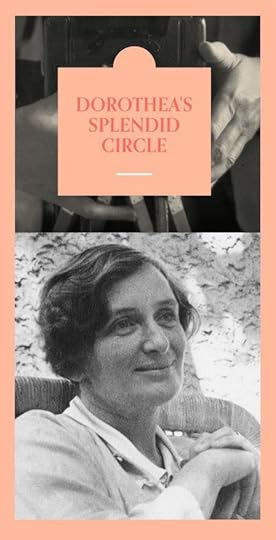
Though she is most known for her iconic Depression-era photograph “Migrant Mother,” Dorothea Lange’s photographs put a face to nearly every major historical event of the twentieth century, including World War II and the Japanese American internment camps.
Her photographs are infused with a deep and abiding dedication to documenting the lives of the have-nots in our country—those banished to the fringes by poverty, hardship, forced migration, and discrimination.
Lange’s legendary empathy as a photographer grew from the childhood trauma of contracting polio. She had a particular genius for the language of the body and could suggest a whole story from how people held themselves.
Her limp also made her vulnerable in ways she drew upon in her work. When walking into a migrant camp during the Depression, for example, she’d sometimes let people see her disability, which helped her establish a connection with them.
In addition to the empathetic portraits of those suffering from poverty and bias, Lange later became known for documenting the Japanese internment camps during the World War II years.
She smuggled out her more daring pictures, lending them to the efforts to halt the internment. Eventually, she was fired by the War Department, and all her photographs of the camps were impounded. They only became known to the public seven decades after she took them.
Learn more about this trailblazer in 10 Fascinating Facts about Dorothea Lange.
. . . . . . . . . . .
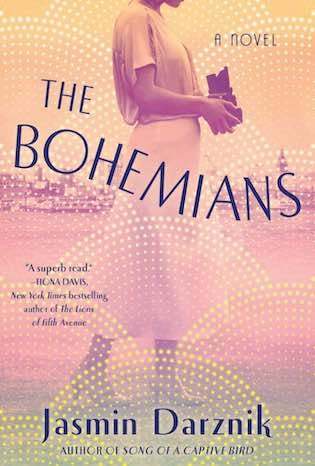
The Bohemians (a novel of Dorothea Lange’s early career)
is available on Bookshop.org*, Amazon*, and wherever books are sold.
. . . . . . . . . . .
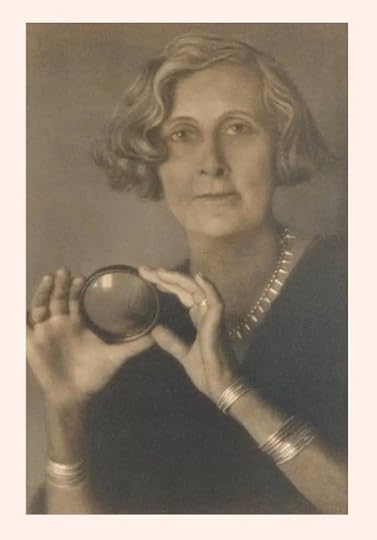
Anne Brigman (1869–1950) was a pioneer who made no distinction between her artistic practice and her quest for freedom.
Beginning in 1901, nearly two decades before Lange arrived in California, Brigman was regularly trekking up to the Sierra Nevada, photographing herself on the edge of a cliff like a swaggering buccaneer, or else posing nude in the crook of a wind-warped tree. Soon enough she was causing a scandal by photographing male nudes.
Her technical skills were as notable as her daring. In a cheeky token of admiration, at one 1920s gathering at Lange’s San Francisco portrait studio, a group of male and female photographers bowed before Brigman as a photographic goddess (photo at top right of this post). Eventually, her skill would earn her a place alongside Ansel Adams and Edward Weston in the pioneering Group f/64.
. . . . . . . . .
Imogen Cunningham
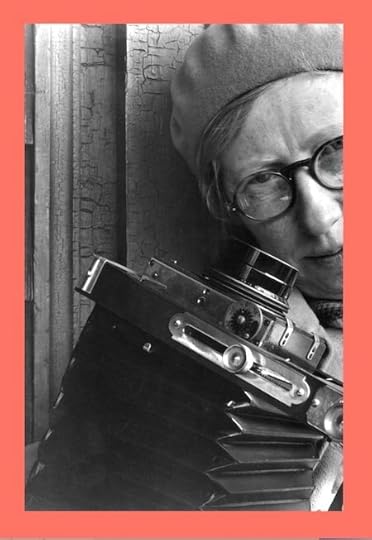
Imogen Cunningham (1883–1976) was one of the first photographers with whom Lange became acquainted when she came to the Bay Area in 1918. When they met Cunningham had already attained a degree of critical recognition rare for a woman in what was still thought of as a man’s profession.
But that wasn’t all that impressed Lange. Cunningham had run a successful portrait studio in Seattle, and while she continued to do portrait work in San Francisco to support herself, Cunningham was making art photography.
Her friends were legion. Ansel Adams esteemed and adored her. She served as an advocate and mentor for many other women photographers. She joined the Women’s Art League in San Francisco, which Dorothea Lange would also join. Her portraits of other women artists include those she took of Frida Kahlo and San Francisco sculptor Ruth Asawa.
In a tale all too common for women artists, Imogen Cunningham has only recently begun to get her due. In the fall of 2021, the Seattle Art Museum put on the first major retrospective of her work.
. . . . . . . . . . .
Consuelo Kanaga
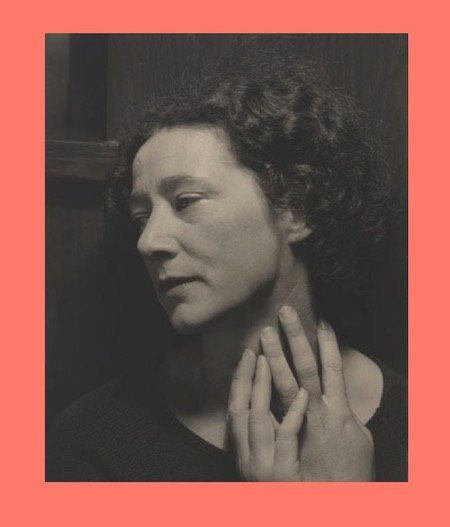
Working in the same vibrant milieu as Cunningham and Lange was Consuelo Kanaga (1894–1978). In 1915, at the age of 21, Kanaga had been hired as a reporter and features writer for The Chronicle—a real feat for a woman of her day. She soon showed a talent for photography and began contributing pictures to the paper as well.
Kanaga was the first woman newspaper photographer Lange had ever met. Many years later, Lange shared her first impressions of this renegade photographer:
“[She] lived in a Portuguese hotel in North Beach, which was entirely Portuguese working men, except Consuelo … She’d go anywhere and do anything. She was perfectly able to do anything at any time the paper told her to. They could send her to places where an unattached woman shouldn’t be sent and Consuelo was never scathed. She was a dasher.”
Lange wouldn’t begin taking documentary photographs until 1932, by which time Kanaga had been practicing a version of that art for over a decade. She’d also bring her radically inclusive eye to people of color, producing portraits of exceptional beauty and power.
. . . . . . . . . .
Each of the women photographers Dorothea Lange met in San Francisco—Anne Brigman, Imogen Cunningham, and Consuelo Kanaga —was brilliant, tenacious, and brave. Taken together, I’d say they were a force.
Contributed by Jasmin Darznik. Jasmin’s debut novel, Song of a Captive Bird, was a New York Times Book Review “Editors’ Choice,” a Los Angeles Times bestseller, longlisted for the Center for Fiction Prize, and awarded the Writers’ Center’s First Novel Prize. Darznik is also the author of the New York Times bestseller The Good Daughter: A Memoir of My Mother’s Hidden Life. Her books have been published in seventeen countries.
Jasmin was born in Tehran, Iran, and came to America when she was five years old. She holds an MFA in fiction from Bennington College, a JD from the University of California, and a Ph.D in English from Princeton University. Now a professor of English and creative writing at California College of the Arts, she lives in the San Francisco Bay Area with her family. To learn more, visit Jasmin Darznik.
. . . . . . . . . . .
*These are Bookshop.org and Amazon Affiliate links. If a product is purchased by linking through, Literary Ladies Guide receives a modest commission, which helps maintain our site and helps it to continue growing!
The post Dorothea Lange’s Splendid Circle: Women Photographers in 1920s San Francisco appeared first on Literary Ladies Guide.
March 21, 2022
Cimarron by Edna Ferber — the 1930 Novel and the 1931 Film
Cimarron by Edna Ferber was a 1930 novel by the prolific American author that was quickly adapted to film, earning accolades and winning 1931’s Academy Award for Best Picture. Though it wasn’t the first of Ferber’s novels to be adapted to film, it was a far more expansive (and expensive) production. It paved the way for more Hollywood blockbusters based on her books.
Cimarron (from a Spanish derivation meaning “wild” or “unruly”) takes for its subject the Land Run in Oklahoma territory in 1889. A 1930 review described the book in a nutshell:
“It depicts the opening up of that great territory known as the Run of ’89 — the fantastic scramble when oil was discovered. The story is told through the experience of Yancey Cravat and his young wife who went to seek their fortunes in the new territory. Always a mysterious character with a shadowy past, Cravat is one of Miss Ferber’s best creations.”
Though we don’t often quote Wikipedia so extensively, the explanation of the historic concept of the “land run” or “land rush” found there is quite helpful as background for fully appreciating the novel. From the entry for Cimarron:
“A land run or land rush was an event in which previously restricted land of the United States was opened to homestead on a first-arrival basis. Lands were opened and sold first-come or by bid, or won by lottery, or by means other than a run … For former Indian lands, the Land Office distributed the sales funds to the various tribal entities, according to previously negotiated terms. The Oklahoma Land Rush of 1889 was the most prominent of the land runs while the Land Run of 1893 was the largest …
The Cimarron Territory was an unrecognized name for the No Man’s Land, an unsettled area of the West and Midwest, especially lands once inhabited by Native American tribes such as the Cherokee and Sioux. In 1886 the government declared such lands open to settlement …
The novel is set in Oklahoma of the late nineteenth and early twentieth centuries. It follows the lives of Yancey and Sabra Cravat, beginning with Yancey’s tale of his participation in the 1893 land rush. They emigrate from Wichita, Kansas, to the fictional town of Osage, Oklahoma with their son Cim and—unknowingly—a Black boy named Isaiah. In Osage, the Cravats print their newspaper, the Oklahoma Wigwam, and build their fortune amongst Indian disputes, outlaws, and the discovery of oil in Oklahoma.
Cimarron was a sensation in America and came to epitomize an era in American history. It was the best-selling novel of 1930, as it provided readers an outlet to escape their present suffering in the Great Depression.”
Ferber’s novels often wove in themes of social justice and feminism, and in intent, at least, Cimarron was no exception. Suffice it to say that it wasn’t a hit in Oklahoma, with its critical views on the treatment of Native Americans. Yet, Ferber falls prey to stereotyping, no matter how unintentional. An excellent essay on rediscovering 20th-century middlebrow literature on MassHumanities observes:
“In recognizing Ferber’s own colonialist attitudes—even as she is writing an anti-colonial narrative—we must keep in mind not only the era in which she was writing, but also the fact that she intended Cimarron as satire and expressed frustration that it was most often considered a straightforward Western narrative. And it is fascinating to see how Ferber, writing almost a century ago, deals with issues of race and ethnicity that we are still dealing with today.
Through a series of subplots, Ferber sets forward different approaches to these issues, ranging from full assimilation of new immigrants and other outsider communities to a multiculturalism that accepts and incorporates ethnic diversity to an extreme nativist call for the “humane but effective” extermination of Native Americans and other minorities.”
. . . . . . . . . . . .

. . . . . . . . . . . .
Most contemporaneous reviews (of both the book and the subsequent film) were generally favorable. The one following was less glowing than average, critiquing the way that Yancey’s character development (or lack thereof) was portrayed:
A 1930 review: “Ferberizing the Indian Territory”
From the Cincinnati Enquirer, March 29, 1930: Despite the almost incredible gusto of this new Ferber story, the swiftness, sustained fortissimo of its color-swept notes, and the stamping narrative that makes Showboat seem almost a tender idyll in comparison — there is still a hollow sound about it, as of someone drumming in a well.
The characters never seem to come whole, and one constantly has the feeling that all the bright show, glamour, and clangorous background of Oklahoma in the land rush of 1889, its gaudy pioneer growth and later furious scuffle for oil, are arranged and elaborated to draw attention from the essential emptiness of inferior people.
For Edna Ferber, this is strange. Gaylord Ravenal of Showboat was a handsome, weak dandy, fascinating but hardly memorable. But in his very weakness, he was human and real.
Yancey Cravat in Cimarron is far more picturesque than Ravenal — a great, vital fellow, lawyer and editor, spouter of classics and fine language, possessing the added fascination of a “past.” When he came to Wichita, Kansas, and established his fiery newspaper, he swept Sabra Venable off her feet and married her.
As the story opens, Yancey, with characteristic volubility and enthusiasm, is describing to Sabra and her people the great land run of 1889. And he does a mighty fine job of it, as Miss Ferber has done throughout the book in all descriptive passages.
But whether the fantastic Yancey is haranguing his relatives by marriage, supplying for a while as citizen and editor the core of a new rough community in Oklahoma, turning to drunkenness and wandering afar from the rather chilly bosom of his family, or dying on a heroic note with a proper quotation from Ibsen— he is still a shell.
We never see within him, nor do we get any real humanity out of his wayward son or hard-boiled daughter. With Sabra, his wife, it’s not the same. Sabra, like virtually all of Miss Ferber’s women, is the best man in the family. The forceful Yancey may turn out to be a dreamer and a fool; at the same time, Sabra climbed to editorship, power, and Congress. She becomes the center and symbol of Osage.
Her character is full-blown. Through her political standing, she becomes the instrument of a thorough, almost minute study of the gradual refinement of a civilization, and of the same social problems that exist today.
Sabra is the product of Miss Ferber’s most acute realism, and it’s because her husband and children are evaluated through her reflections that they have no real entity of their own. It’s almost as if they existed only in her mind.
But in Cimarron, the scene is the hero — or, as Miss Ferber would probably prefer it, the heroine. It is splendidly recorded, and gives the book, particularly the early part, that sense of exciting haste, confusion, and color that makes Cimarron one of Miss Ferber’s most fascinating novels, even if it is far from being her best.
. . . . . . . . . . .
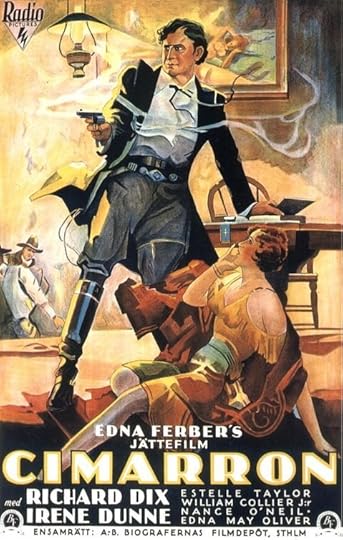
. . . . . . . . . . .
Cimarron: The 1931 filmHollywood was already familiar with Edna Ferber by the time Cimarron appeared in print. A few of her books were made into silent films, and the advent of “talkies” made her sweeping sagas even more promising to produce as movies.The Camden (NJ) Courier-Post wrote:
“I will say for RKO they are certainly buying plenty of good material. Their latest adventure is Cimarron, Edna Ferber’s latest book, telling the story of the opening of Oklahoma as a state. Miss Ferber generally hits the best-seller mark or close to it, and RKO had to reckon with that when they paid a fancy price for this piece of fiction. I am told it cost close to $100,000 for the screen rights but of course, this may be a trifle exaggerated.”
It was not an exaggeration. A tough businesswoman (even as she claimed not to be), Ferber sold film rights for Cimarron to RKO for between $100,000 to $125,000 — a huge amount in those days, as it would be in today’s dollars.
The U.S. was already sinking into the depths of the Great Depression when the film was made and released. It was a big-budget film, directed by Wesley Ruggles and starring Richard Dix as Yancey Cravat and Irene Dunne as Sabra Cravat.
Though it was hugely well received and won the Academy Award for Best Picture, it didn’t do as well as expected at the box office; the budget was not recouped. Still, that didn’t stop Hollywood from continuing to mine Ferber’s books, Showboat (1936) and Giant (1956) among the future adaptations.
The film version of Cimarron stood out for its sympathetic portrayal of and attitude toward Native Americans, something atypical in mid-20th-century films. It did suffer for its minstrel-y portrayal of Isaiah, the young Black boy, a choice likely not approved of by Ferber.
Cimarron was remade in 1960, though that adaptation wasn’t nearly as much of a critical success as the first iteration, and generally received unfavorable reviews.
The following review, though devoid of much insight, is typical of the gushing praise the 1931 film received. The reviewer seems to have missed any of the messages from the book that survived in the adaptation:
From the Tyler Daily Courier-Times (Tyler, TX), March 15, 1931: A stirring and beautiful dramatization of Edna Ferber’s justly celebrated novel, it features an exceptional cast headed by Richard Dix, Irene Dunne (a beautiful newcomer to the screen who seems destined to become an outstanding favorite), Edna May Oliver, Estelle Taylor, George Stone, and many others in noteworthy character parts.
… In Cimarron is invested stirring drama, stark beauty, daring, an adventure on a plane seldom seen on the screen. It’s a story of compelling interest, a well-knit, suspense-filled drama that follows a man and his wife from the turbulent, rough-and-tumble days of the Oklahoma frontier down to our own day.
The spirit of the pioneer era that Edna Ferber so gloriously recorded in her novel has been captured in this screen dramatization. For the indomitable spirit of the pioneer, like a symbol of strength, pervades every moment of Cimarron.
The main character, Yancey Cravat, is portrayed by Richard Dix. With his young wife and son, Yancey sets out to the Oklahoma frontier of 1889, eager to set up a home and establish himself and his family in the “promised land.”
Yancey is a God-fearing, truth-loving man. He becomes in turn a militant, courageous editor, and an honest, fearless lawyer. But deep in his heart is the spirit of a true adventurer, a leader, and a fighter.
This spirit causes him to inwardly despise safety and comfort, and forces him to seek new lands, new conquests. It compels him to desert his family for years on end in pursuit of new ideals. The story of Yancey’s colorful life, which extends right up to 1929, is filled with stirring adventures the likes of which are seldom seen on screen.
. . . . . . . . .
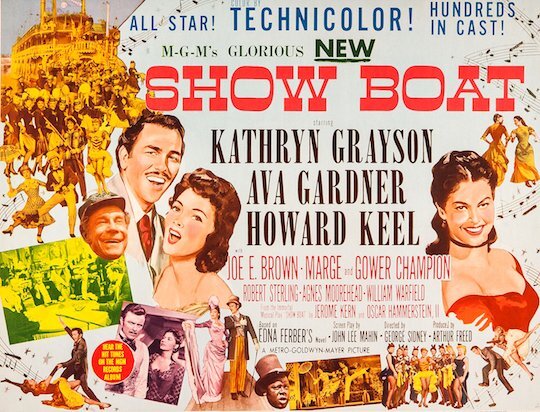
You might also like: Show Boat: From Page to Stage to Film
. . . . . . . . .
The post Cimarron by Edna Ferber — the 1930 Novel and the 1931 Film appeared first on Literary Ladies Guide.



